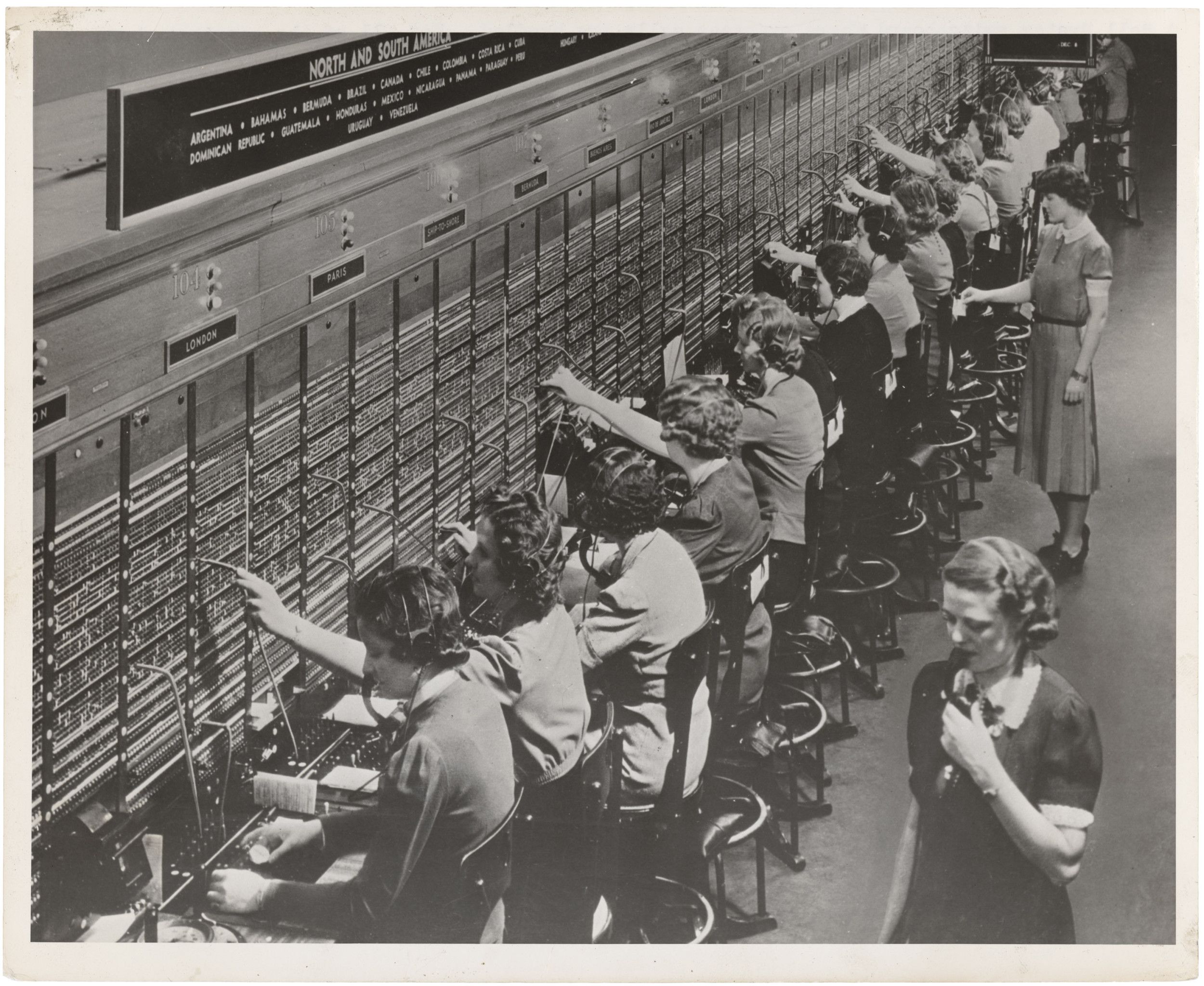The Power of Women's Roles in U.S. Social and Political Daily Life
Weighing the Evidence
All documents and text associated with this activity are printed below, followed by a worksheet for student responses.Introduction
Welcome to the "Weighing the Evidence" activity at the U.S. National Archives. Here, you will be required to evaluate a series of primary sources. With the theme of "Roles of Women in U.S. Social and Political Life" carefully evaluate each source and place it on the side of the pendulum from least persuasive to most persuasive. Be sure to place them in the exact order you think gives an increasingly stronger argument for the powerful roles women have in U.S. society. If you run out of room, stack the sources on top of each other. You will encounter various types of primary sources, so keep in mind which medium you think is more impacting. When you're finished, send the confirmation email to the instructor and write a minimum 350 word justification.Name:
Class:
Class:
Worksheet
The Power of Women's Roles in U.S. Social and Political Daily Life
Weighing the Evidence
Examine the documents and text included in this activity. Consider how each document does or does not support two opposing interpretations or conclusions. Fill in the topic or interpretations if they are not provided. To show how the documents support the different interpretations, enter the corresponding document number into the boxes near the interpretation. Write your conclusion response in the space provided. Interpretation 1
Least Persuasive
Least Persuasive
Primary Sources as Arguments: The Power of Women's Roles in U.S. Social and Political Life
Interpretation 2
Most Persuasive
Most Persuasive
1
Activity Element
American Women and Social Change - Women at Work
Page 2
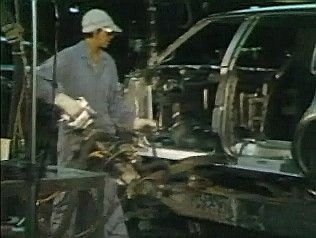
2
Activity Element
The Vietnam Women's Memorial on the Mall
Page 1
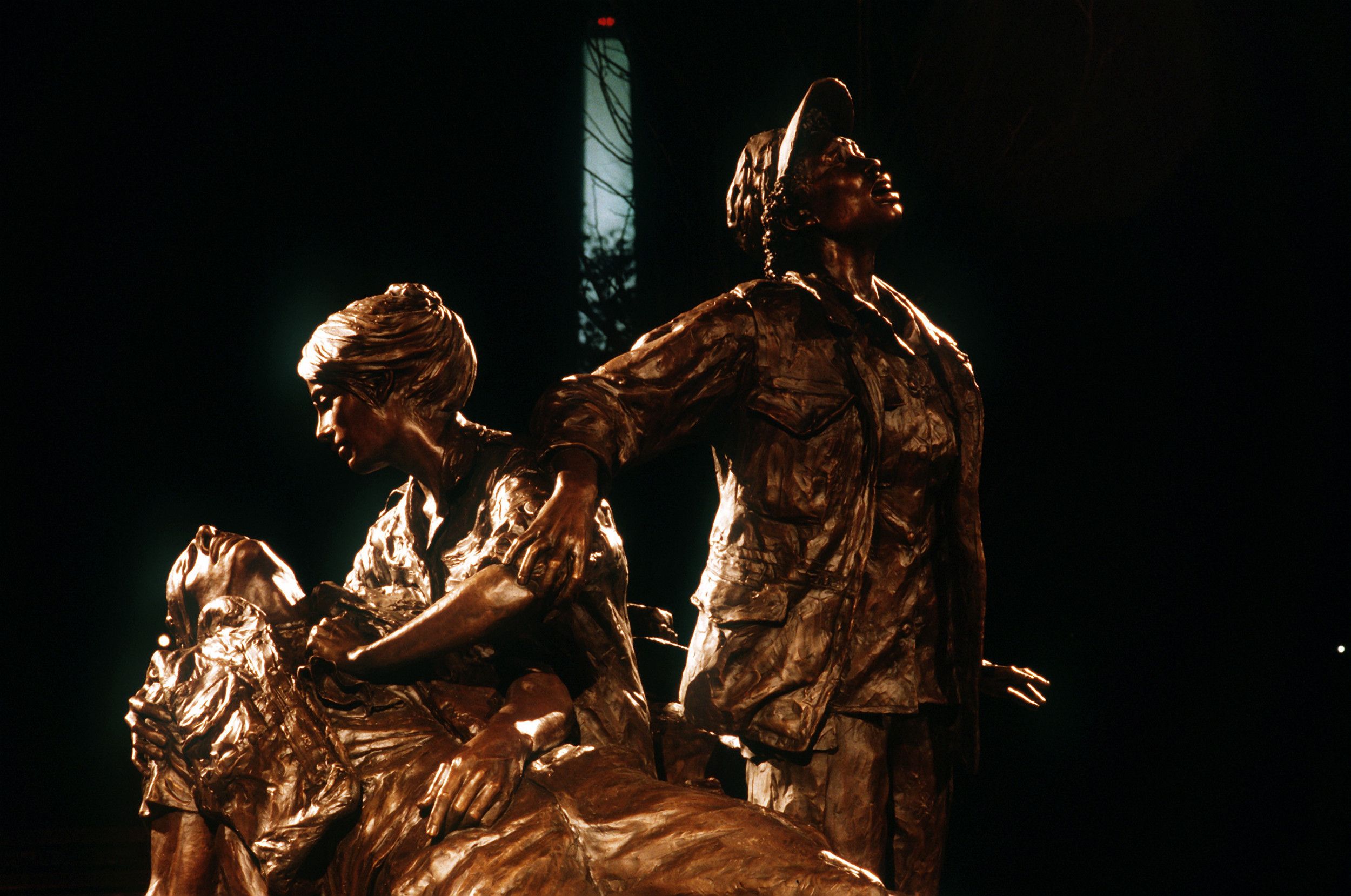
3
Activity Element
Recruitment Brochure for Women's Army Auxiliary Corps
Page 1
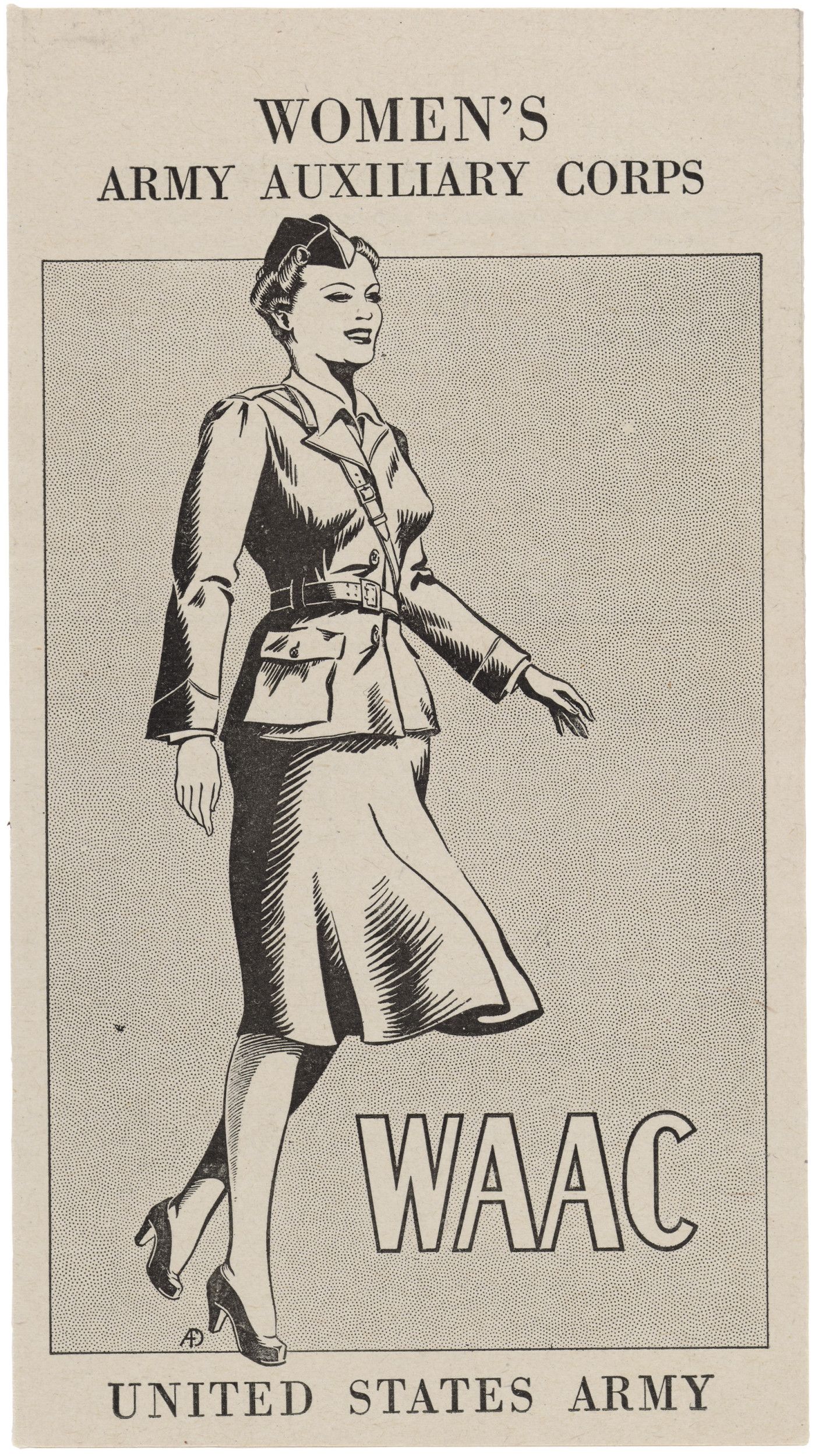
4
Activity Element
Labor. [African-American] women at work in lumber yards. [African-American] women, dressed in men's clothes, lifting heavy pieces of lumber
Page 1
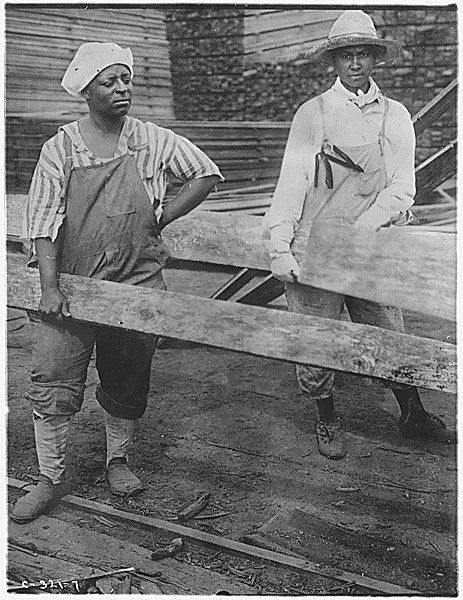
5
Activity Element
The first contingent of the Women's Overseas Hospitals, supported by the National American . . .
Page 2
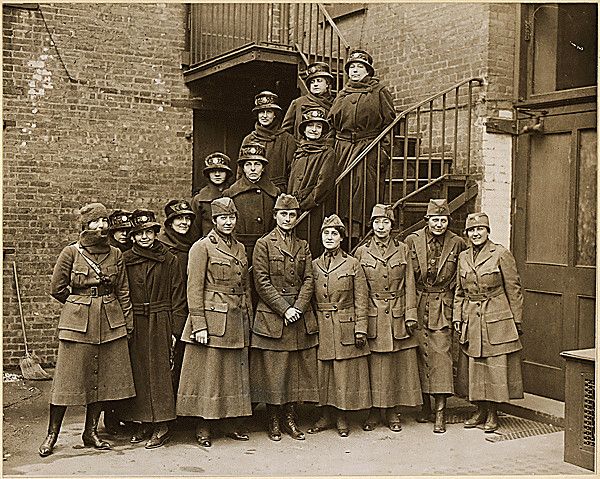
6
Activity Element
House Resolution 6293 Establishing the Women's Army Auxiliary Corps
Page 1
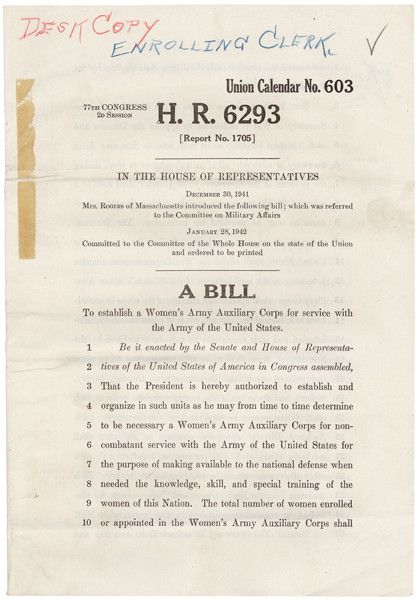
7
Activity Element
Cherokee Indian Crafts Women and the Economy of Basketry
Page 1

8
Activity Element
Letter to President Franklin D. Roosevelt from Miss Frances M. Kubicki Regarding the Employment of Married Women
Page 1

9
Activity Element
What Some of the Most Successful Women are Wearing This Year
Page 1
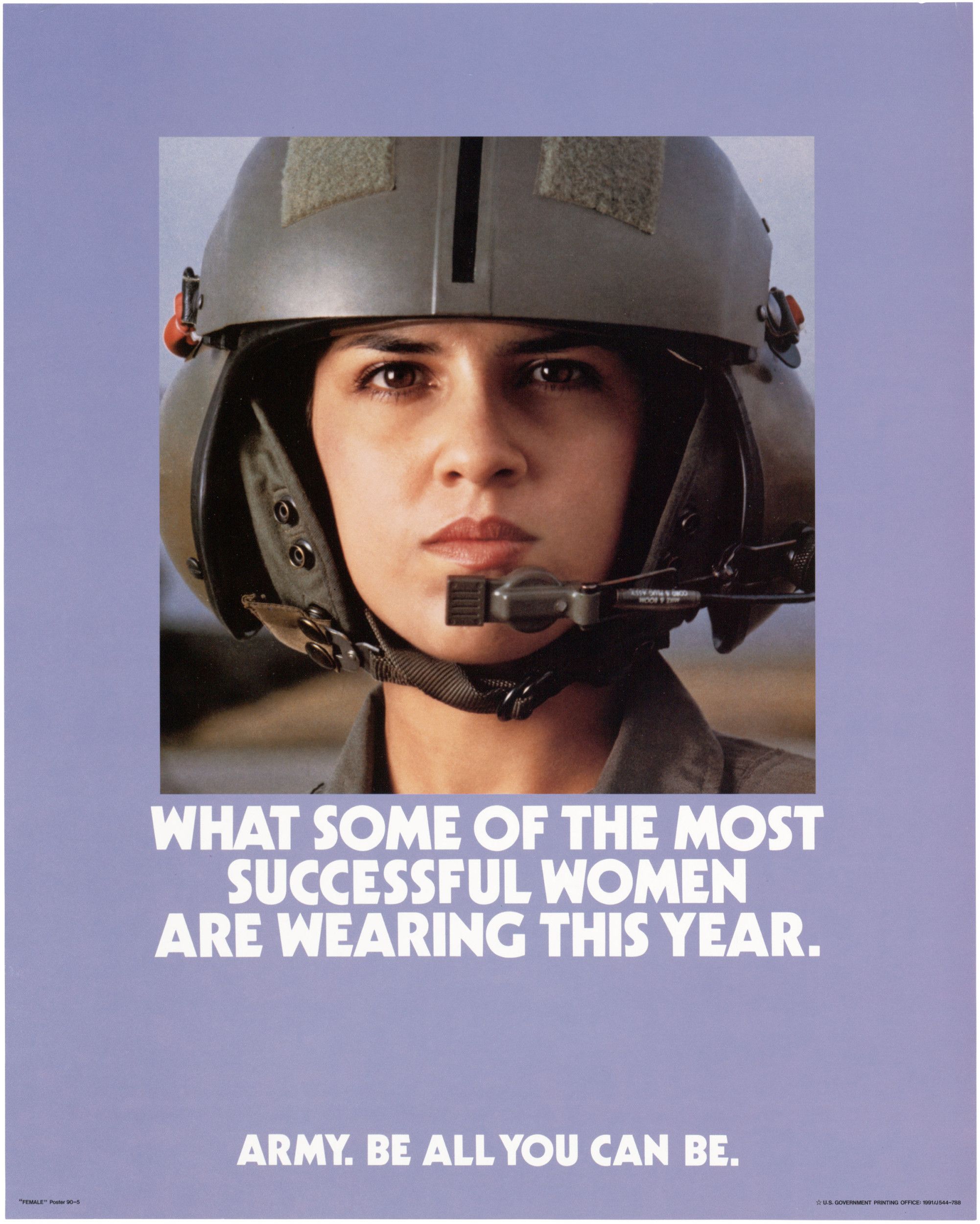
10
Activity Element
Petition from the Iowa Federation of Women's Clubs in Favor of Child Labor Reform
Page 1

11
Activity Element
The Lady and the Tiger
Page 1
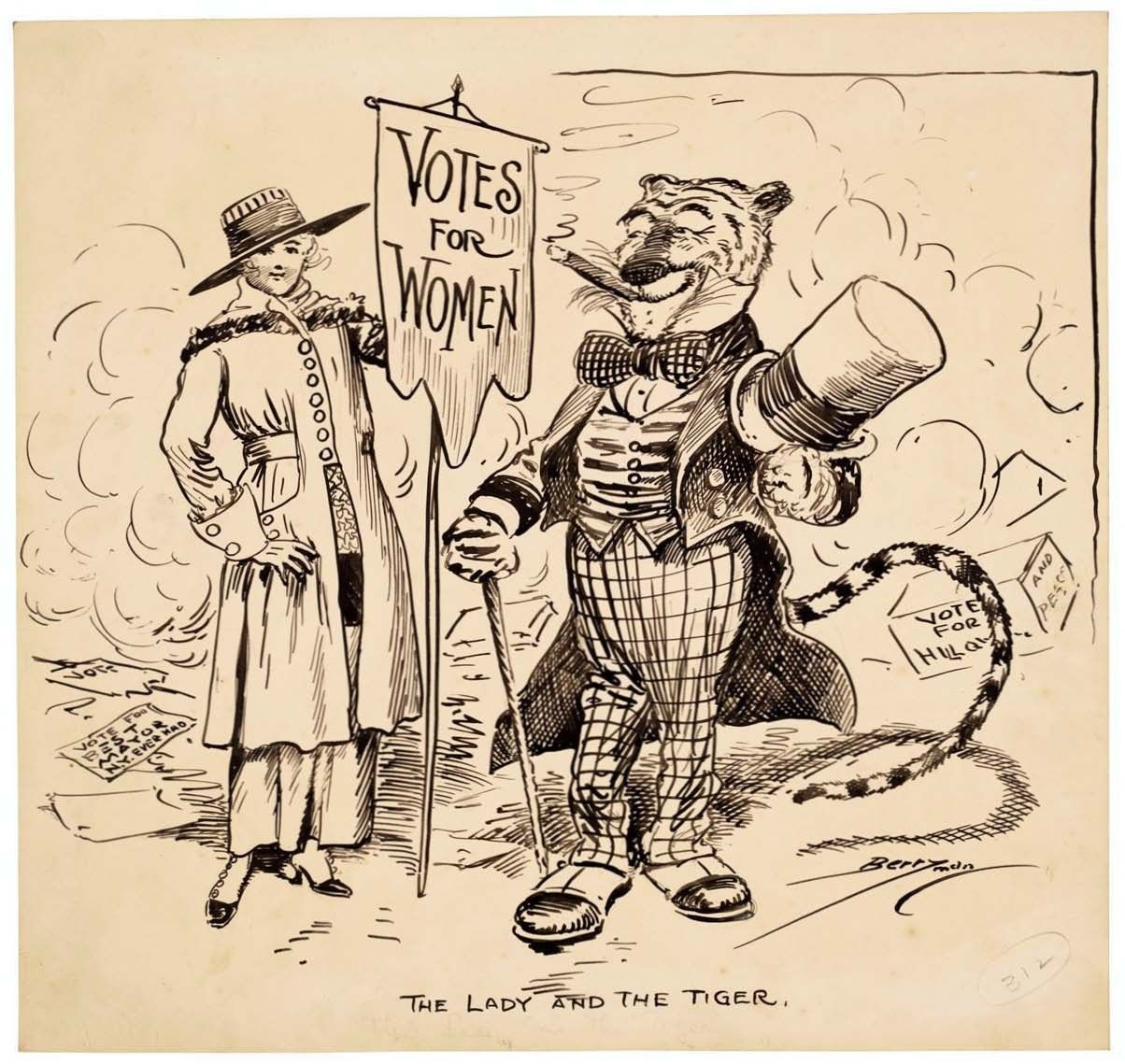
12
Activity Element
Sandra Day O'Connor Being Sworn in as Supreme Court Justice by Chief Justice Warren Burger, Her Husband John O'Connor Looks On
Page 1
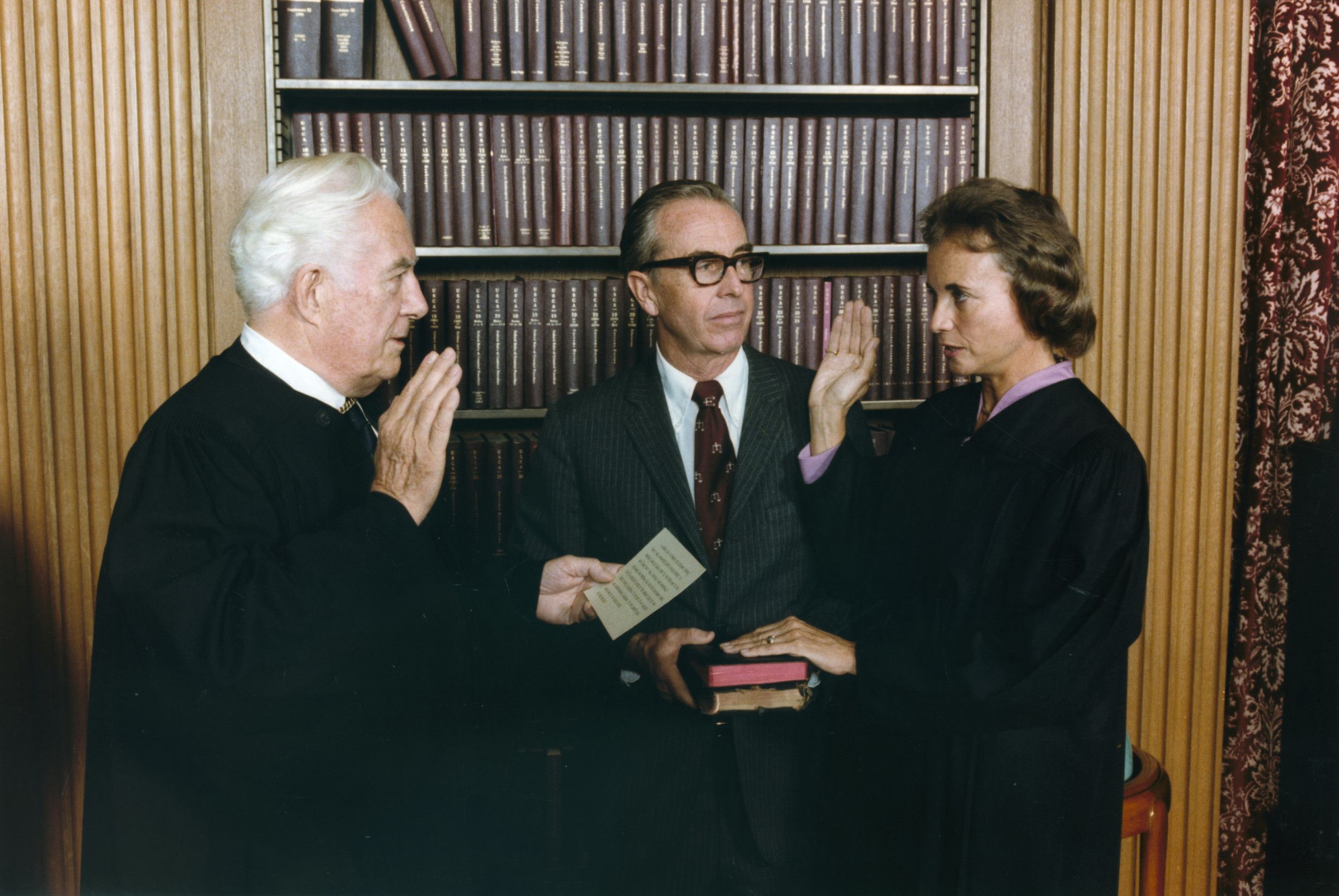
13
Activity Element
Certificate from the State of Wisconsin Ratifying the 19th Amendment to the Constitution
Page 1
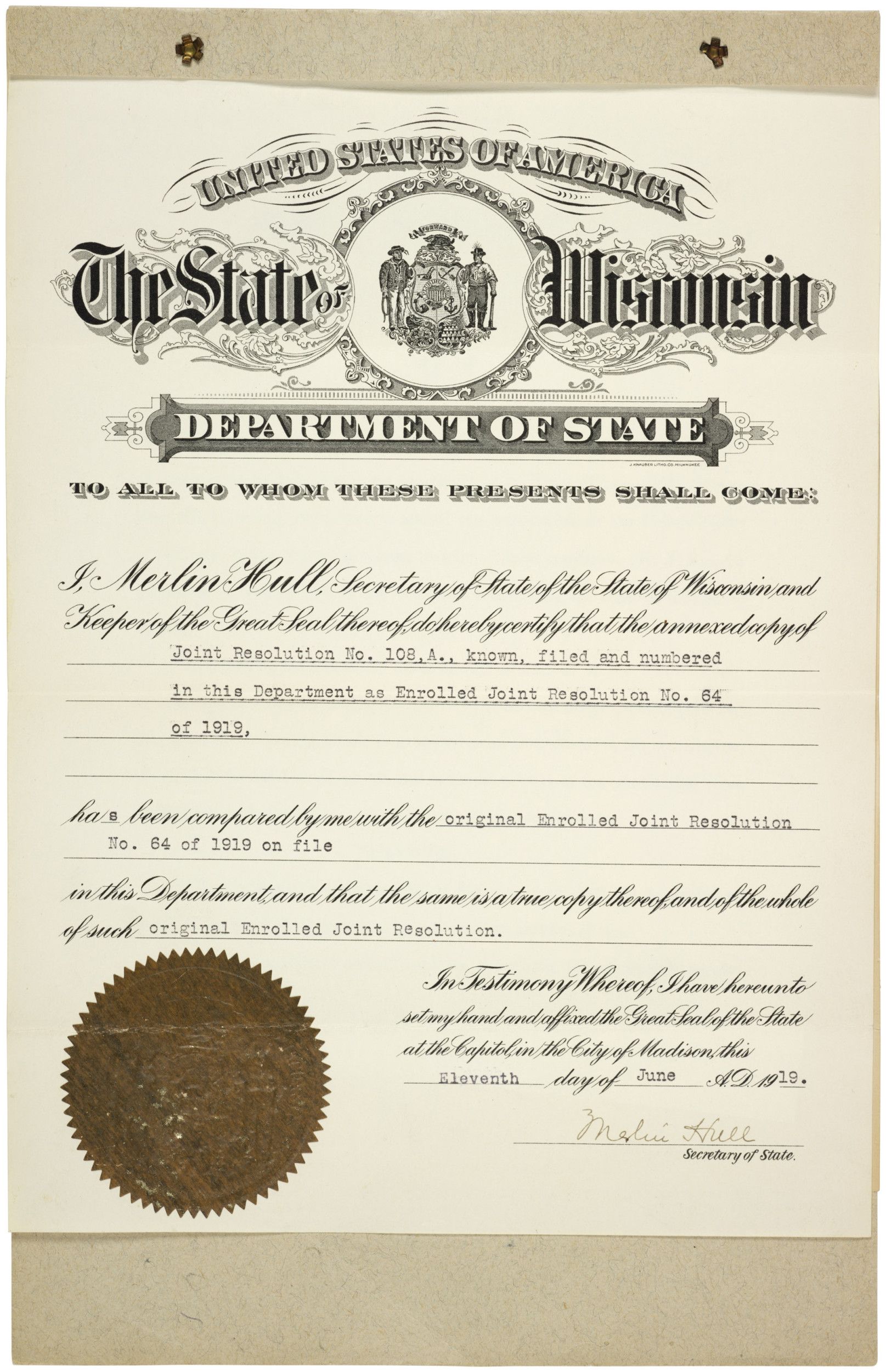
14
Activity Element
Women shipfitters worked on board the USS NEREUS, and are shown as they neared completion of the floor in a part of the engine room. Left to right are Shipfitters Betty Pierce, Lola Thomas, Margaret H
Page 1

15
Activity Element
Message of President Franklin Roosevelt nominating Frances Perkins of New York to be Secretary of Labor
Page 1
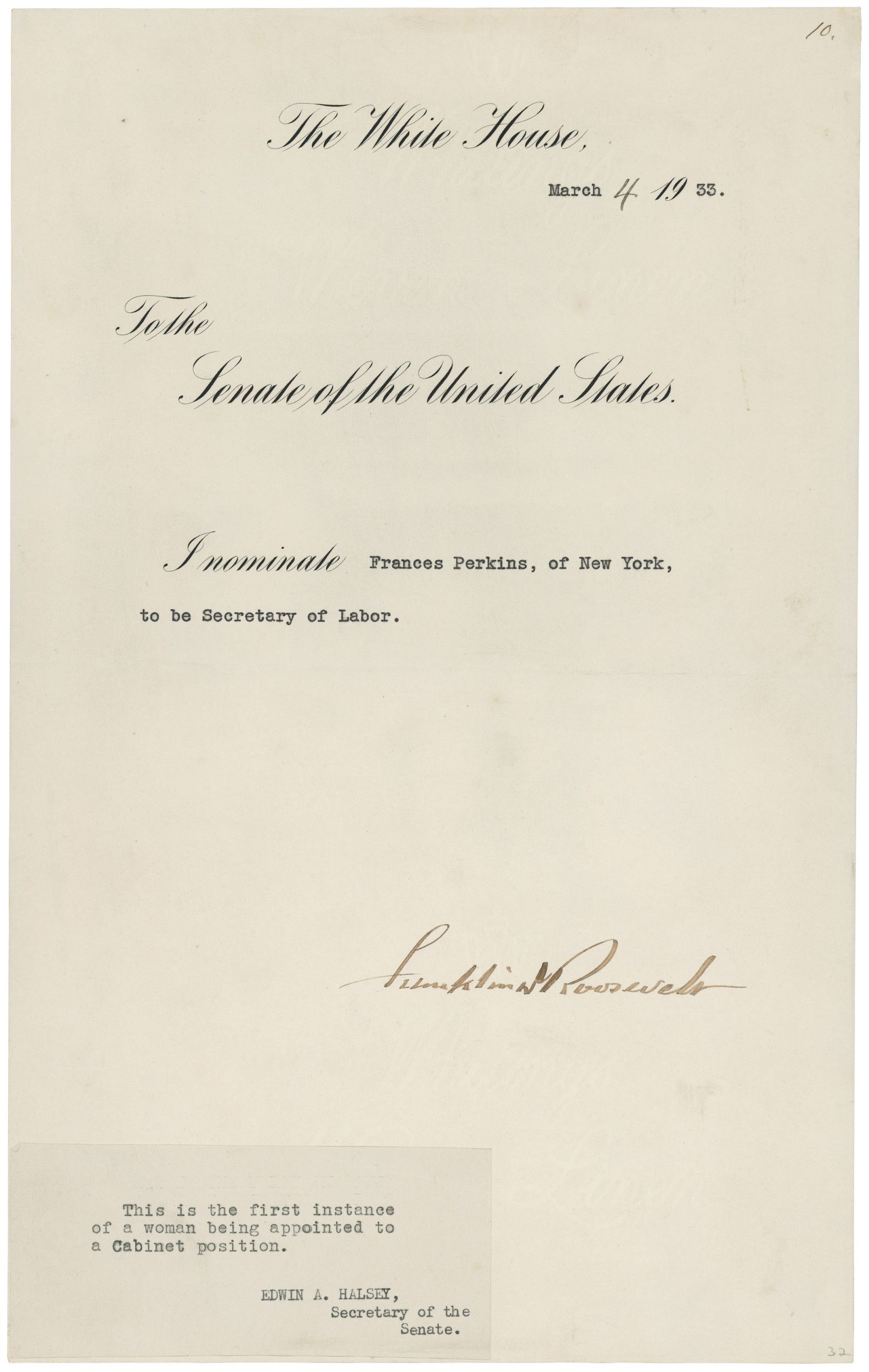
16
Activity Element
Police Report on Arrest of Rosa Parks
Page 1
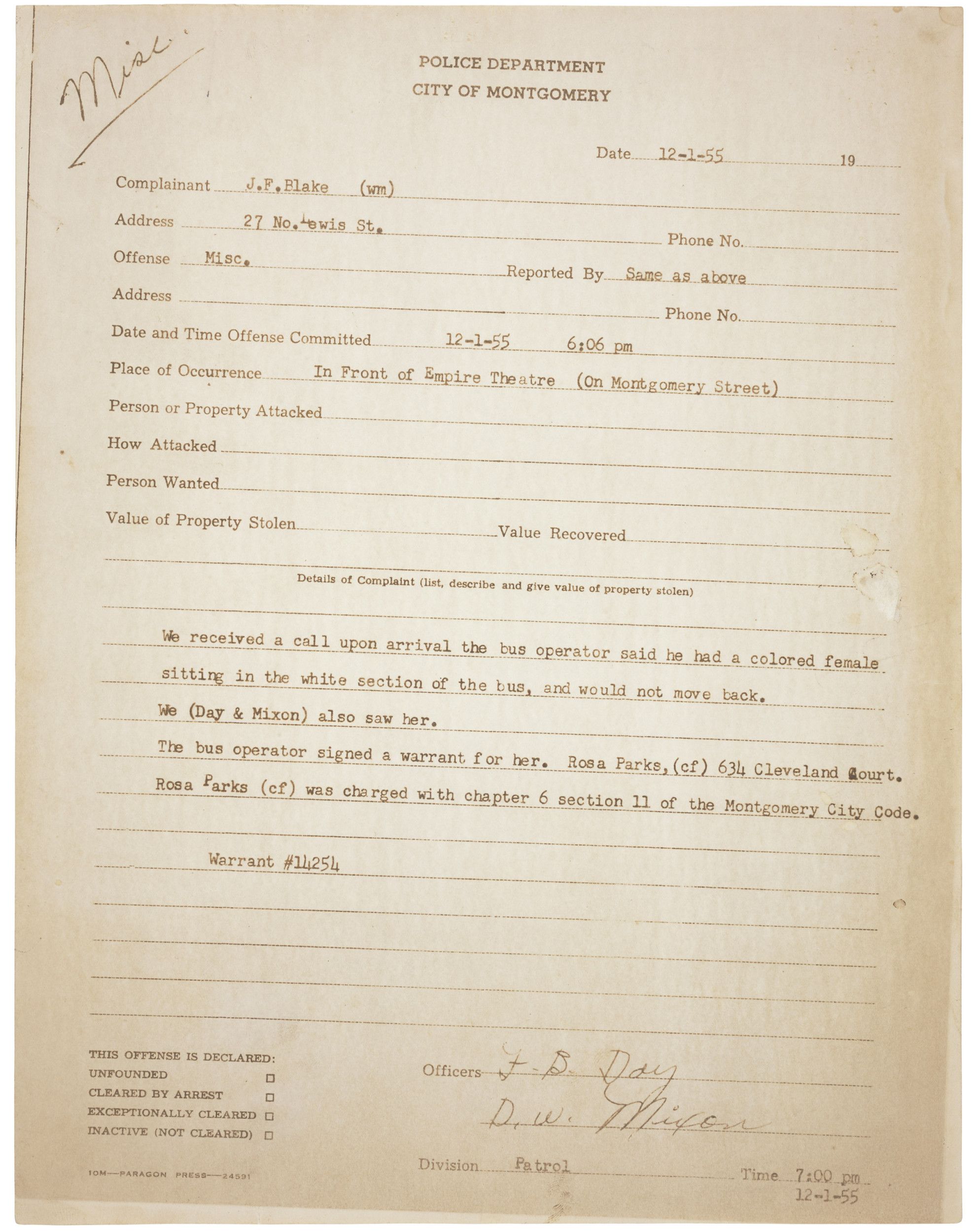
17
Activity Element
Photograph of Women Working at a Bell System Telephone Switchboard
Page 1
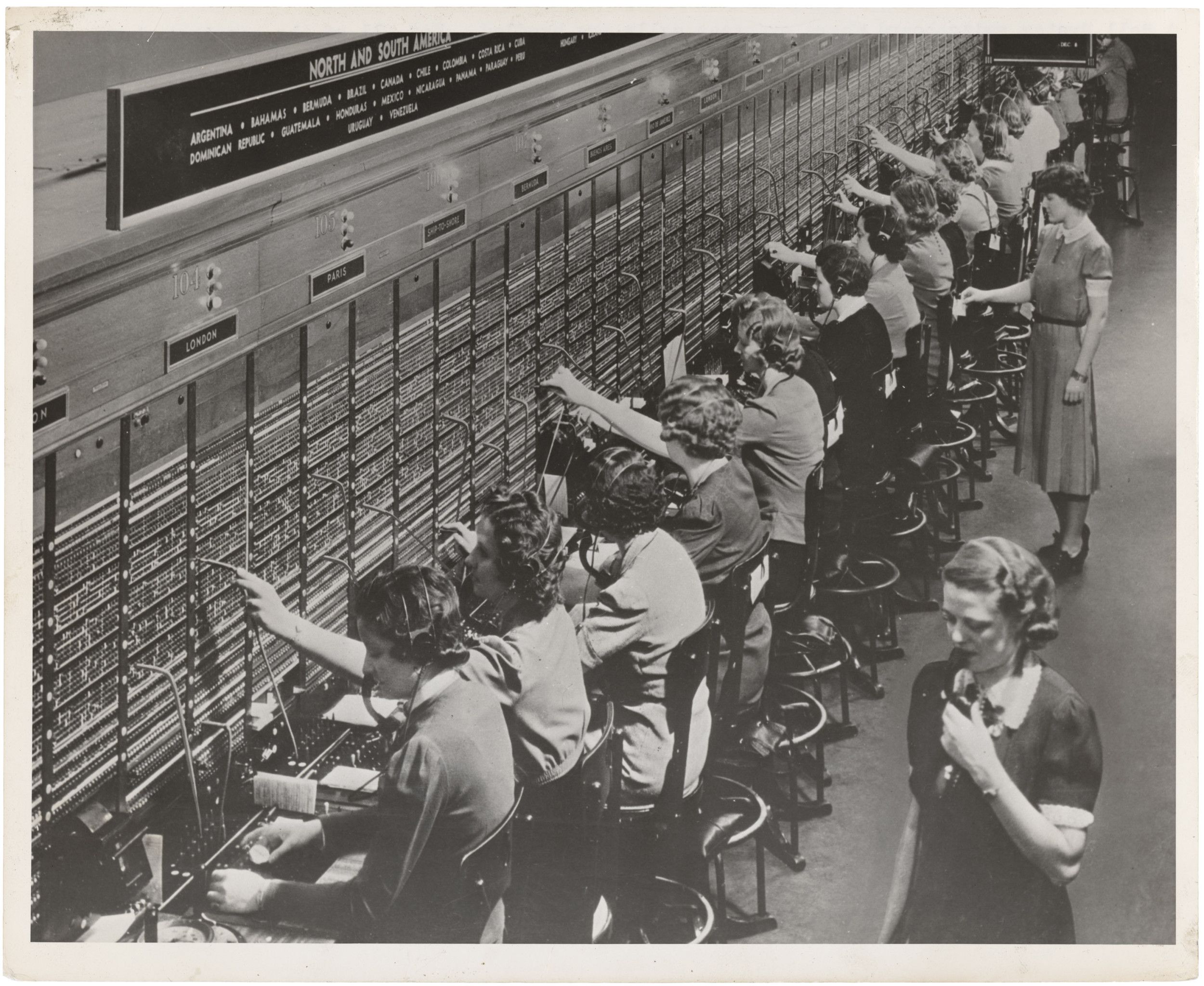
Conclusion
The Power of Women's Roles in U.S. Social and Political Daily Life
Weighing the Evidence
Your Response
Document
American Women and Social Change - Women at Work
1975
Freelance photographer-journalist Betty Medsger, school librarian Sharon Prah, steel plant foreman Patricia Franzen, and automobile assembly plant welder Joan Wilson discuss the effects on children of working mothers, the response of men to the working woman, their reasons for working, and the life of women in non-traditional jobs. You can also watch this video in our main National Archives online catalog.
This primary source comes from the Records of the U.S. Information Agency.
National Archives Identifier: 50554
Full Citation: Motion Picture 306.4323; American Women and Social Change - Women at Work; 1975; Moving Images Relating to U.S. Domestic and International Activities , 1982 - 1999; Records of the U.S. Information Agency, ; National Archives at College Park, College Park, MD. [Online Version, https://www.docsteach.org/documents/document/working-women-change, April 18, 2024]American Women and Social Change - Women at Work
Page 2
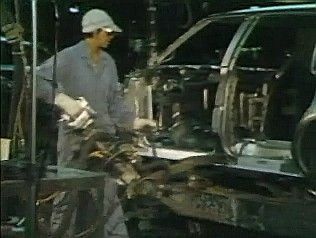
Document
The Vietnam Women's Memorial on the Mall
12/1/1993
This primary source comes from the Records of the Office of the Secretary of Defense, 1921 - 2008.
National Archives Identifier: 6489412
Full Citation: The Vietnam Women's Memorial on the Mall; 12/1/1993; Records of the Office of the Secretary of Defense, 1921 - 2008, . [Online Version, https://www.docsteach.org/documents/document/the-vietnam-womens-memorial-on-the-mall, April 18, 2024]The Vietnam Women's Memorial on the Mall
Page 1
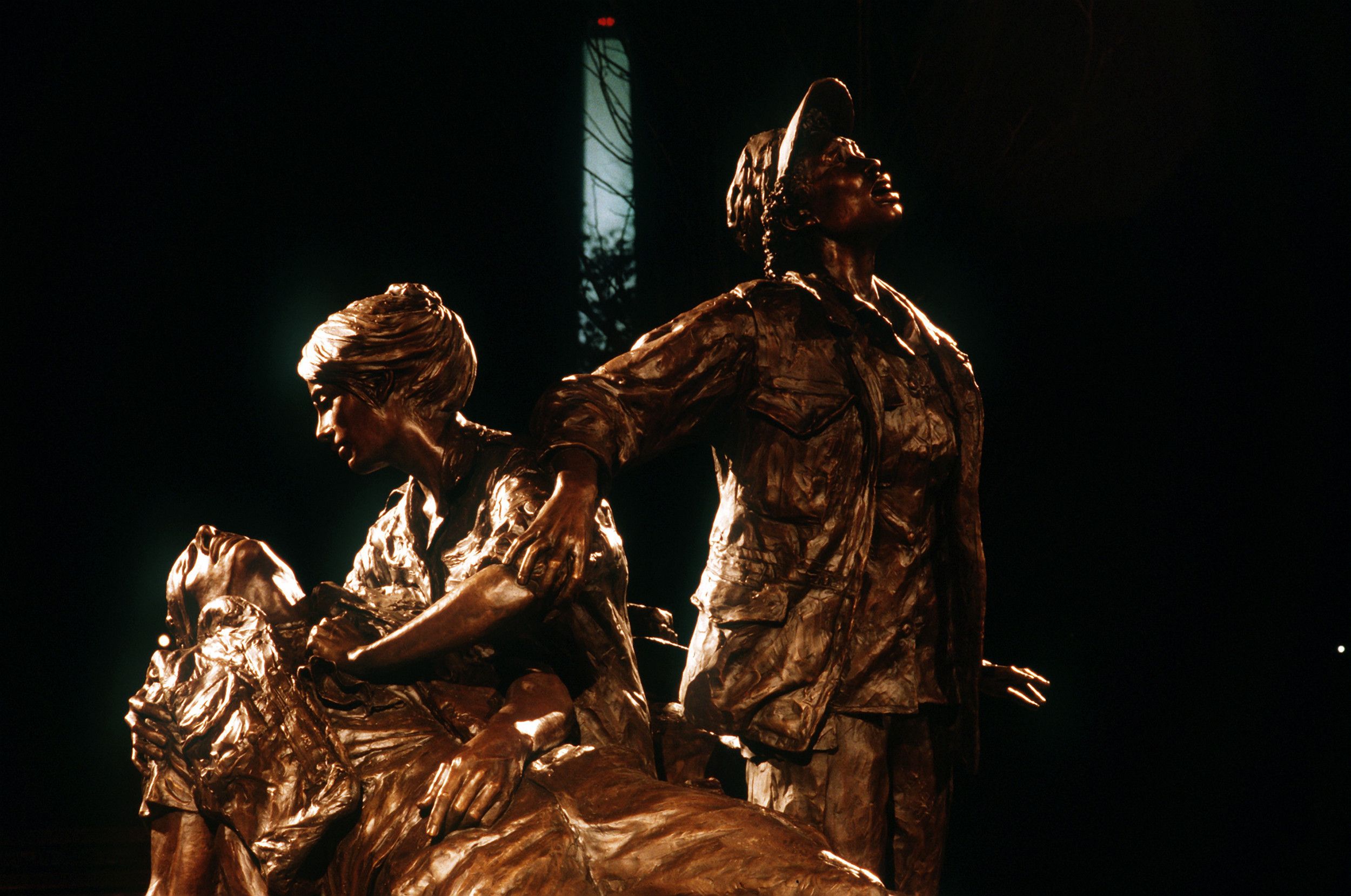
Document
Recruitment Brochure for Women's Army Auxiliary Corps
3/24/1942
This item is a recruitment brochure.
Additional details from our exhibits and publications
On May 14, 1942, Congress approved the creation of a Women's Army Auxiliary Corps (WAAC) for women to serve in noncombatant military positions. This 1942 recruitment brochure encouraged women to join. Only the cover of the brochure is shown.
This primary source comes from the Records of the War Department General and Special Staffs.
National Archives Identifier: 595692
Full Citation: Recruitment Brochure for Women's Army Auxiliary Corps; 3/24/1942; Records of the War Department General and Special Staffs, . [Online Version, https://www.docsteach.org/documents/document/recruitment-brochure-for-womens-army-auxiliary-corps, April 18, 2024]Recruitment Brochure for Women's Army Auxiliary Corps
Page 1
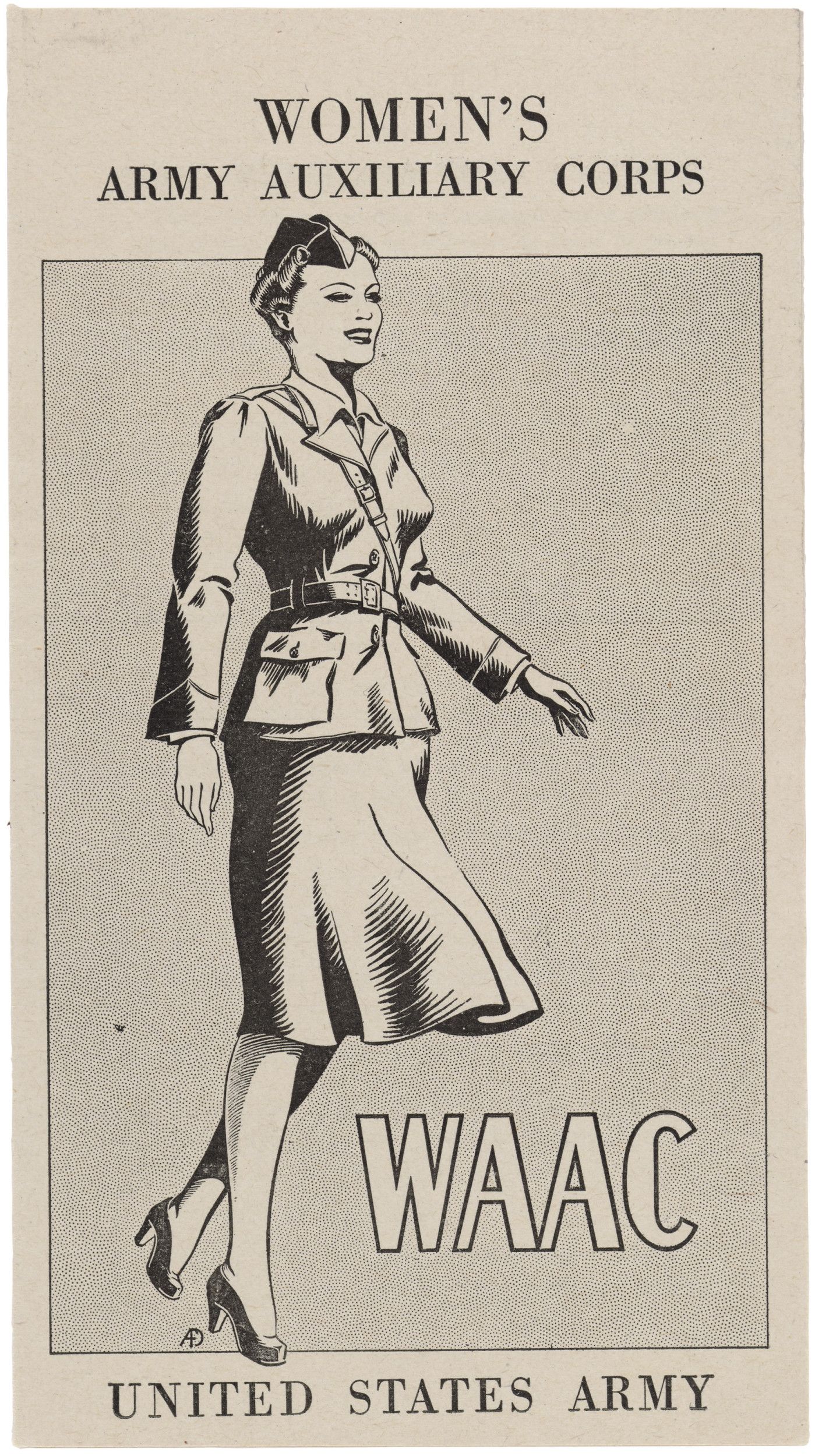
Document
Labor. [African-American] women at work in lumber yards. [African-American] women, dressed in men's clothes, lifting heavy pieces of lumber
2/5/1919
This primary source comes from the Records of the Women's Bureau.
National Archives Identifier: 522867
Full Citation: Labor. [African-American] women at work in lumber yards. [African-American] women, dressed in men's clothes, lifting heavy pieces of lumber; 2/5/1919; Records of the Women's Bureau, . [Online Version, https://www.docsteach.org/documents/document/labor-[africanamerican]-women-at-work-in-lumber-yards-[africanamerican]-women-dressed-in-mens-clothes-lifting-heavy-pieces-of-lumber, April 18, 2024]Labor. [African-American] women at work in lumber yards. [African-American] women, dressed in men's clothes, lifting heavy pieces of lumber
Page 1
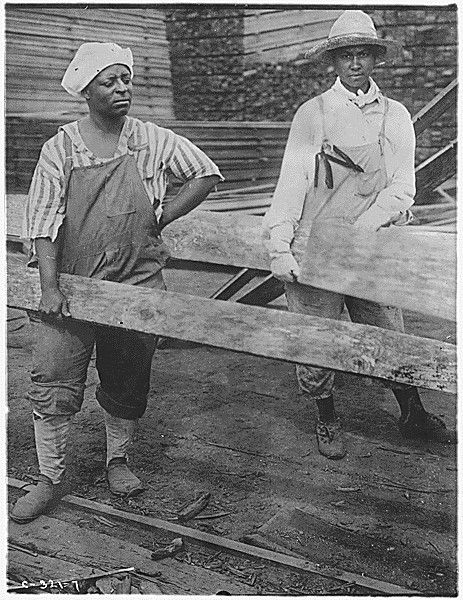
Document
The first contingent of the Women's Overseas Hospitals, supported by the National American . . .
1917 - 1918
Full caption reads as follows: The first contingent of the Women's Overseas Hospitals, supported by the National American Woman Suffrage Association.
This primary source comes from the Records of the War Department General and Special Staffs.
National Archives Identifier: 533774
Full Citation: Photograph 165-WW-(600A)10; The first contingent of the Women's Overseas Hospitals, supported by the National American . . .; 1917 - 1918; American Unofficial Collection of World War I Photographs, 1917 - 1918; Records of the War Department General and Special Staffs, ; National Archives at College Park, College Park, MD. [Online Version, https://www.docsteach.org/documents/document/first-contingent-womens-hospitals, April 18, 2024]The first contingent of the Women's Overseas Hospitals, supported by the National American . . .
Page 2
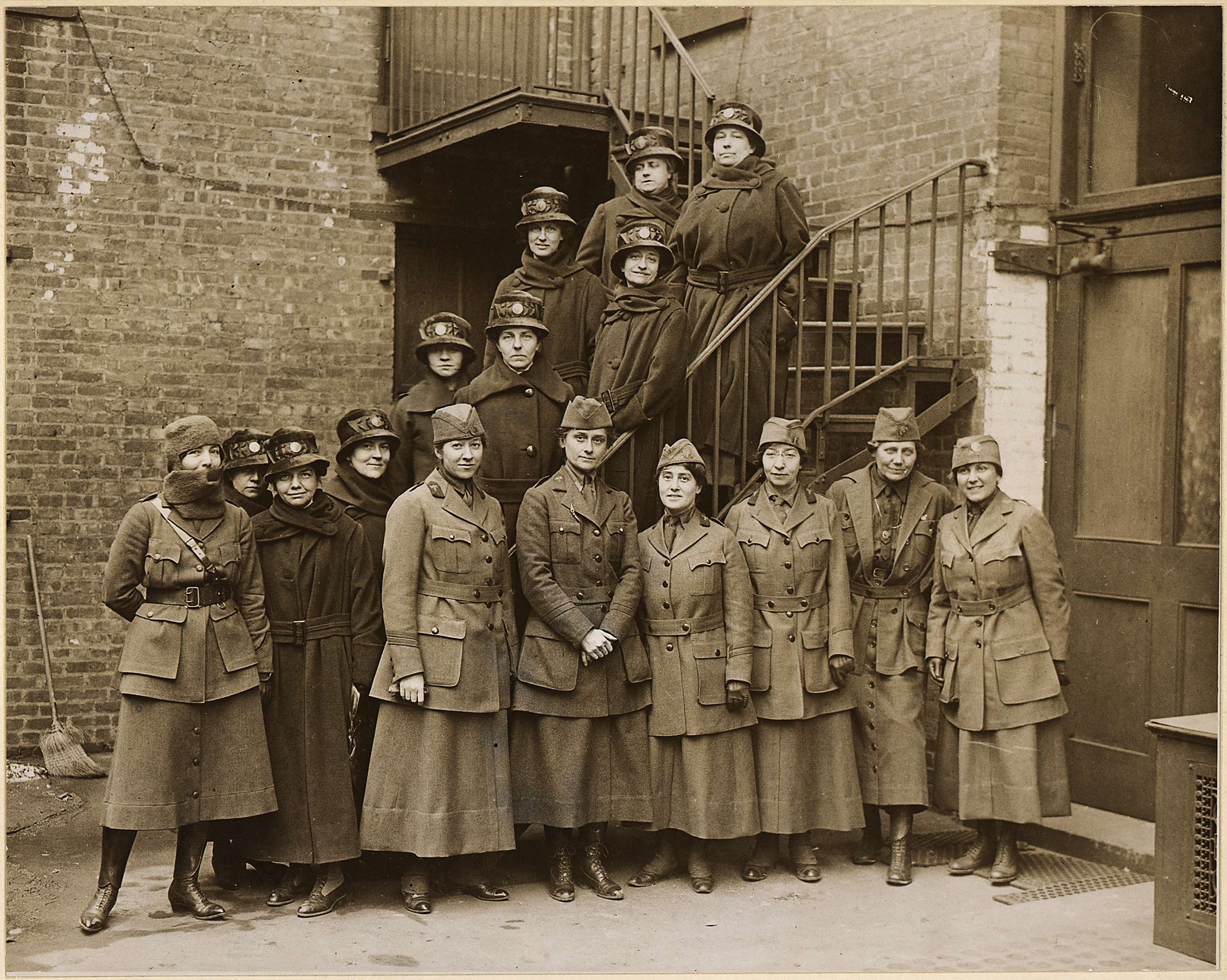
Document
House Resolution 6293 Establishing the Women's Army Auxiliary Corps
1/28/1942
This bill, introduced by Representative Edith Nourse Rogers and signed into law on May 14, 1942, established the Women's Auxiliary Corps for noncombat service with the U.S. Army. A year later the unit was renamed the Women's Army Corps, and the servicewomen were granted official military status.
This primary source comes from the Records of the U.S. House of Representatives.
National Archives Identifier: 4397811
Full Citation: House Resolution 6293 Establishing the Women's Army Auxiliary Corps; 1/28/1942; (HR 77A-B5); Bills and Resolutions Originating in the House, 1789 - 1974; Records of the U.S. House of Representatives, ; National Archives Building, Washington, DC. [Online Version, https://www.docsteach.org/documents/document/house-resolution-6293, April 18, 2024]House Resolution 6293 Establishing the Women's Army Auxiliary Corps
Page 1
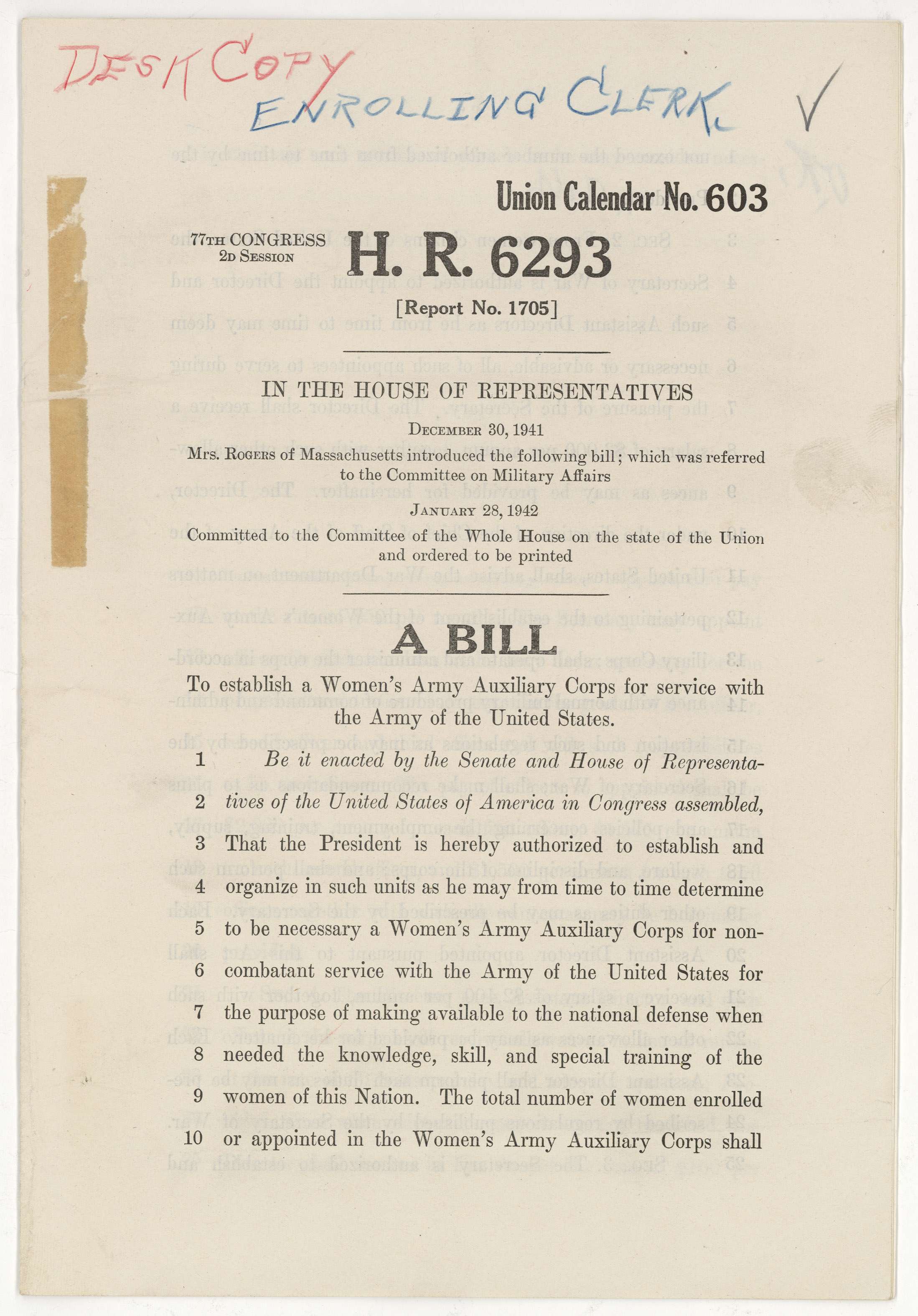
House Resolution 6293 Establishing the Women's Army Auxiliary Corps
Page 2

House Resolution 6293 Establishing the Women's Army Auxiliary Corps
Page 3

House Resolution 6293 Establishing the Women's Army Auxiliary Corps
Page 4

House Resolution 6293 Establishing the Women's Army Auxiliary Corps
Page 5
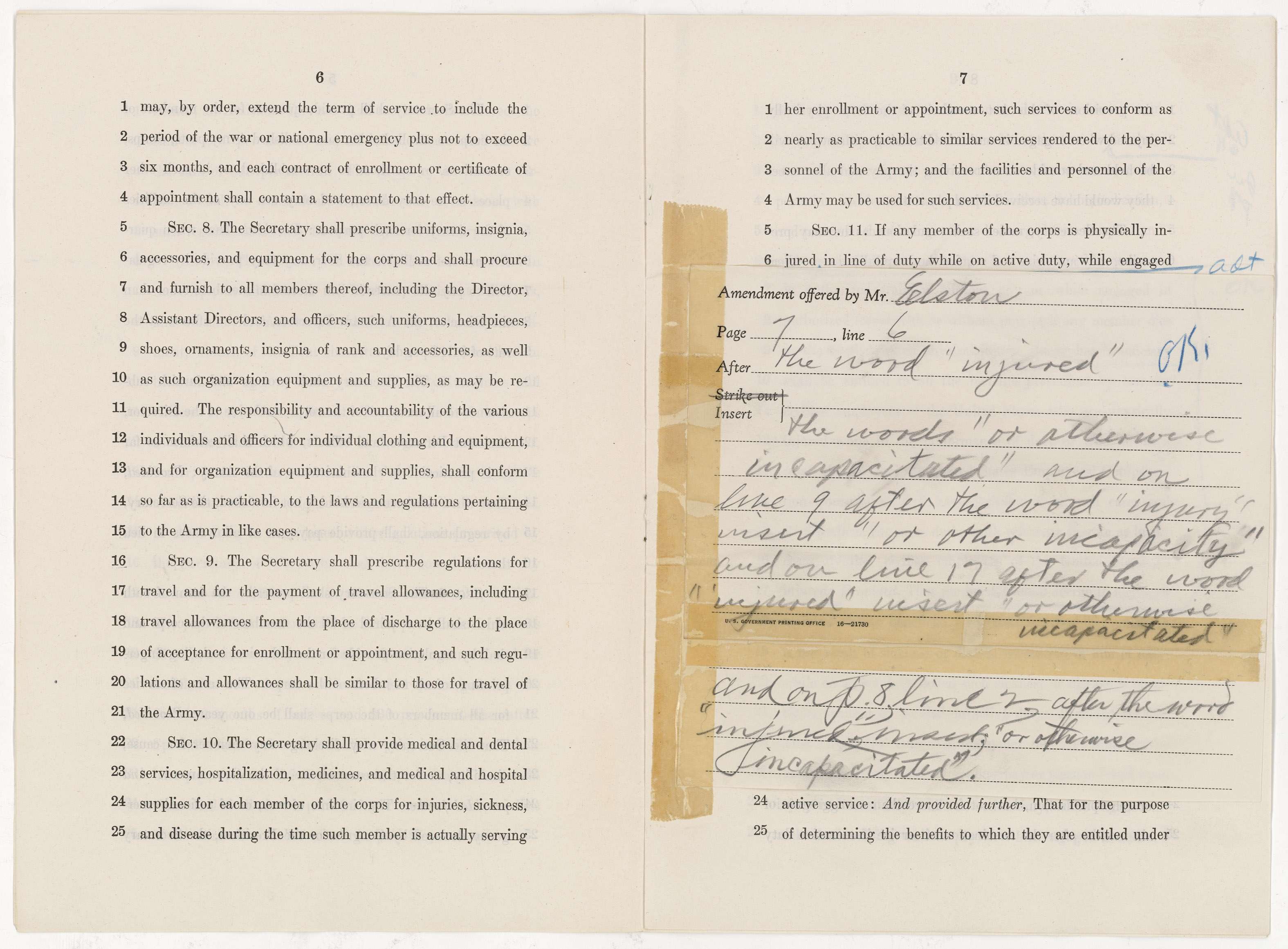
House Resolution 6293 Establishing the Women's Army Auxiliary Corps
Page 6

House Resolution 6293 Establishing the Women's Army Auxiliary Corps
Page 7

House Resolution 6293 Establishing the Women's Army Auxiliary Corps
Page 8
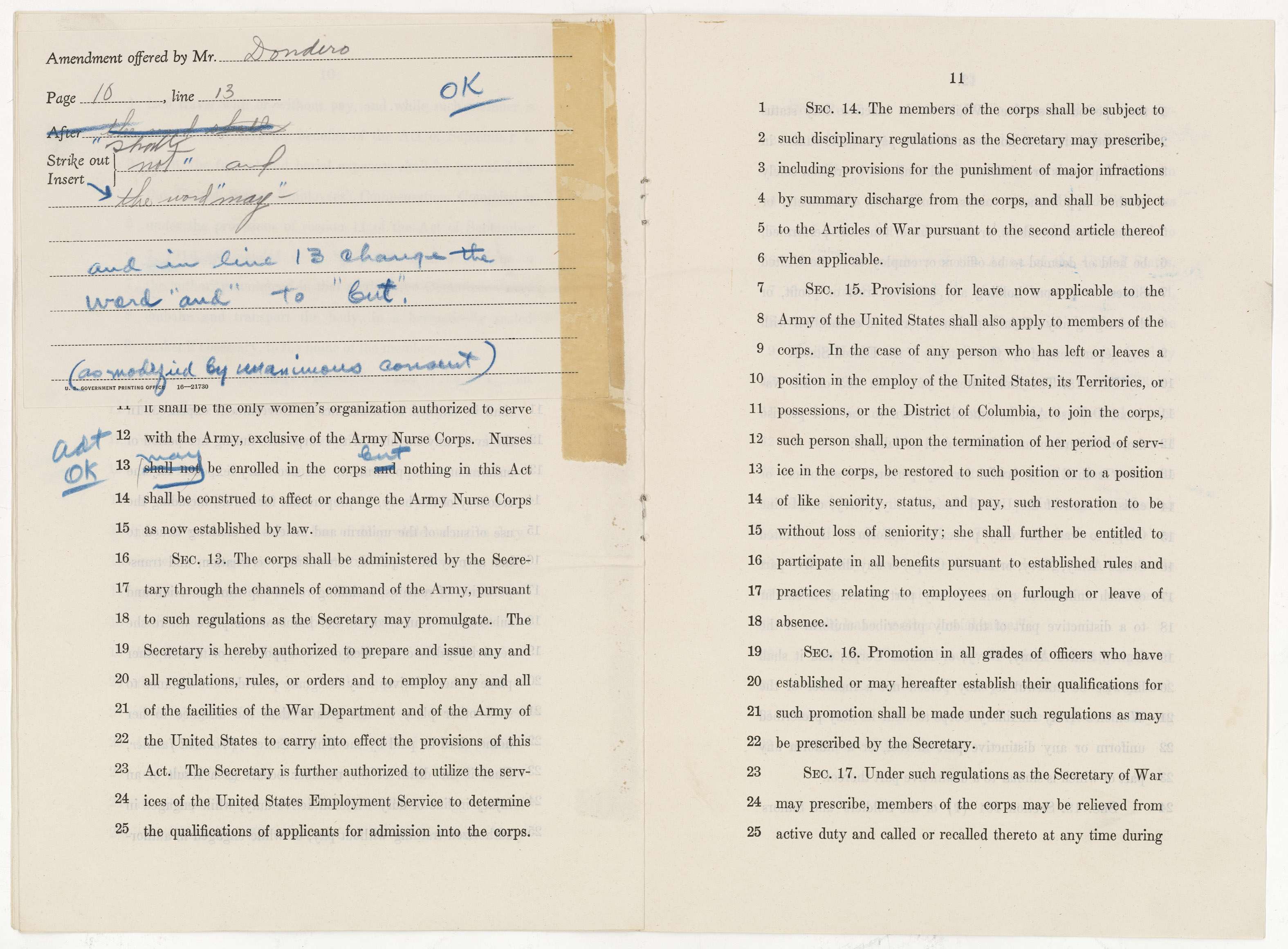
House Resolution 6293 Establishing the Women's Army Auxiliary Corps
Page 9

House Resolution 6293 Establishing the Women's Army Auxiliary Corps
Page 10

House Resolution 6293 Establishing the Women's Army Auxiliary Corps
Page 11
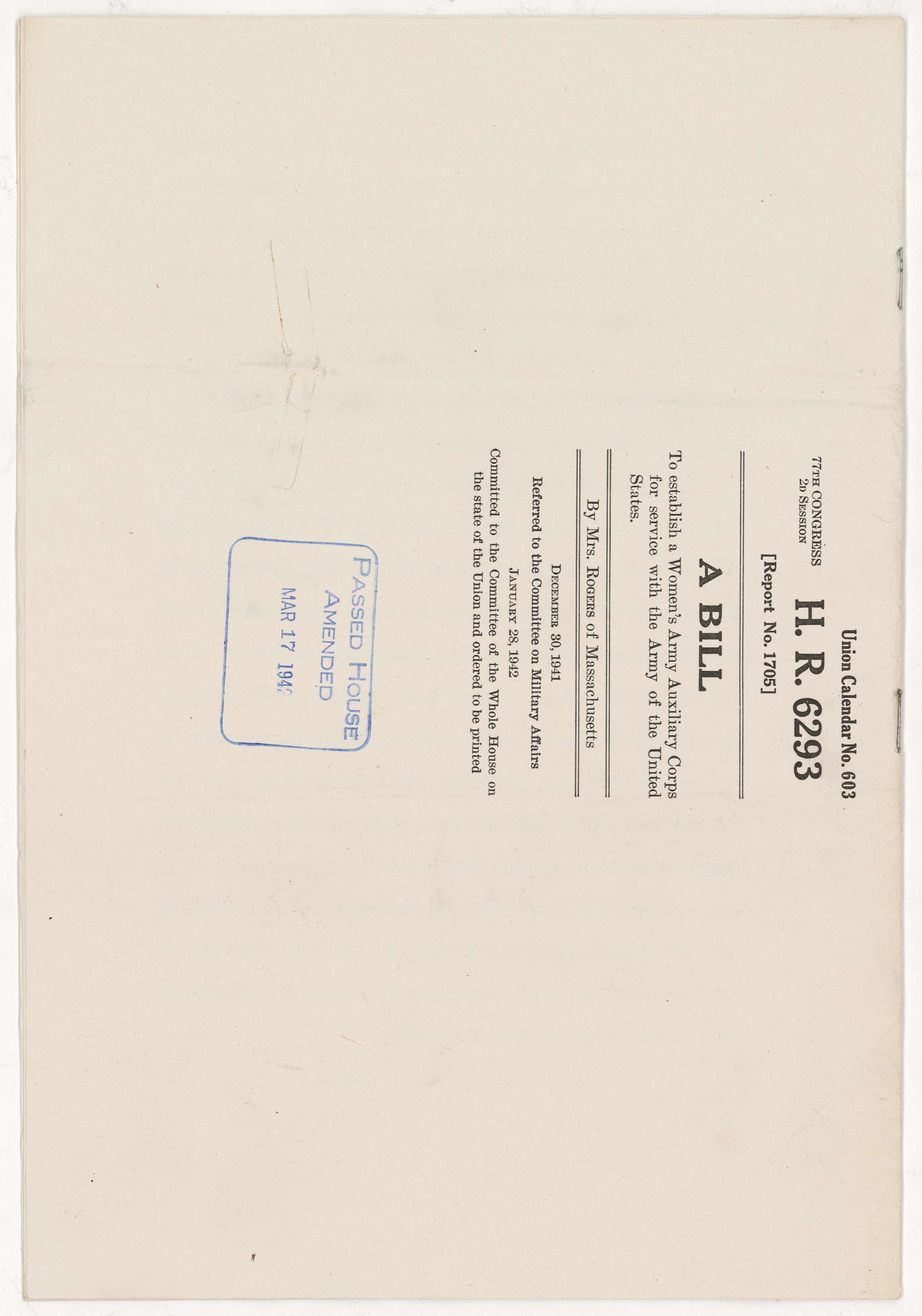
Document
Cherokee Indian Crafts Women and the Economy of Basketry
5/1977
This report was created by the Cherokee Field Office of the Indian Arts and Crafts Board in the Department of the Interior. Select pages are shown. See the entire document in the National Archives online catalog.
This primary source comes from the Records of the Indian Arts and Crafts Board.
National Archives Identifier: 281609
Full Citation: Cherokee Indian Crafts Women and the Economy of Basketry; 5/1977; Cherokee Field Office Records, 1968 - 1983; Records of the Indian Arts and Crafts Board, ; National Archives at Atlanta, Morrow, GA. [Online Version, https://www.docsteach.org/documents/document/economy-basketry, April 18, 2024]Cherokee Indian Crafts Women and the Economy of Basketry
Page 1

Cherokee Indian Crafts Women and the Economy of Basketry
Page 2

Cherokee Indian Crafts Women and the Economy of Basketry
Page 3
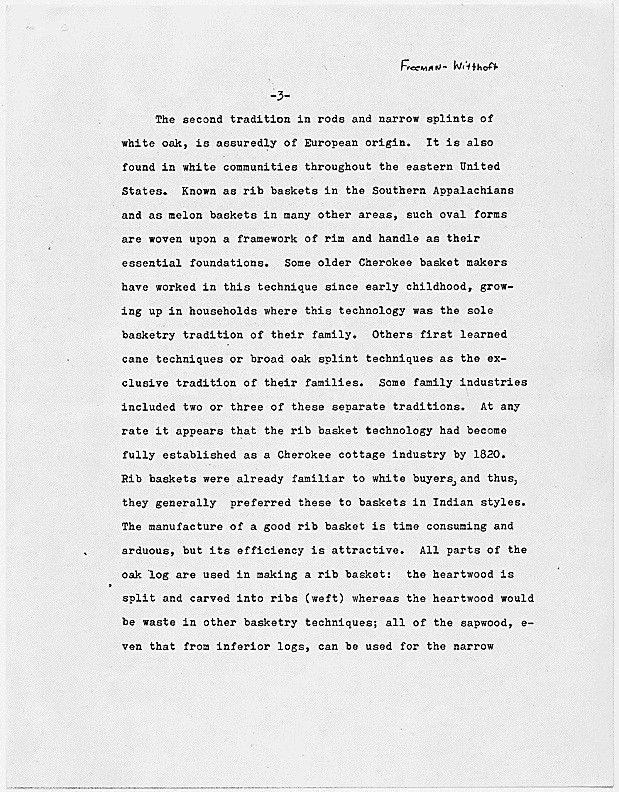
Cherokee Indian Crafts Women and the Economy of Basketry
Page 4
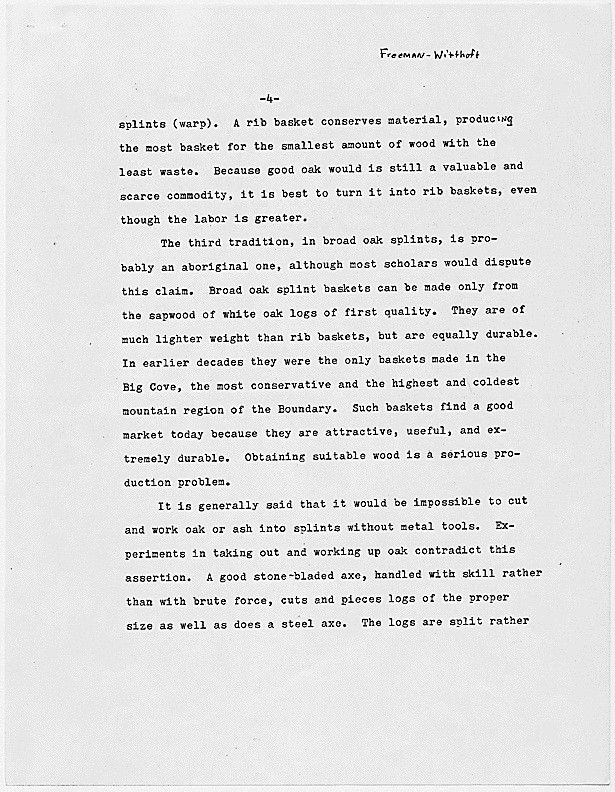
Cherokee Indian Crafts Women and the Economy of Basketry
Page 5

Cherokee Indian Crafts Women and the Economy of Basketry
Page 6
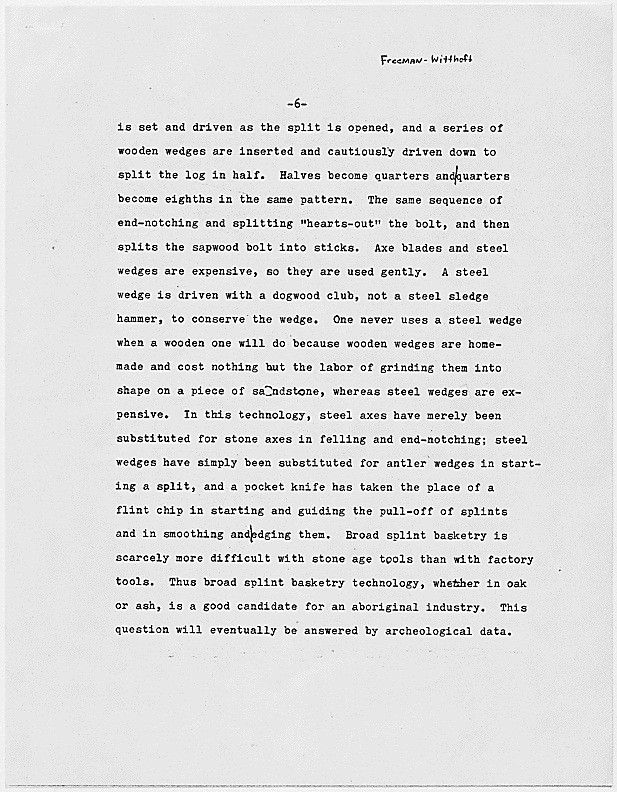
Cherokee Indian Crafts Women and the Economy of Basketry
Page 7
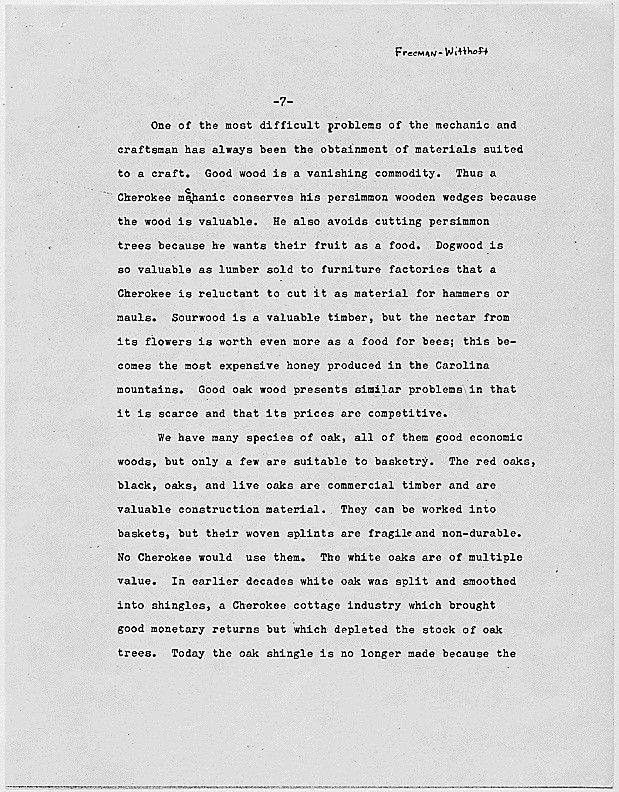
Cherokee Indian Crafts Women and the Economy of Basketry
Page 8

Cherokee Indian Crafts Women and the Economy of Basketry
Page 9
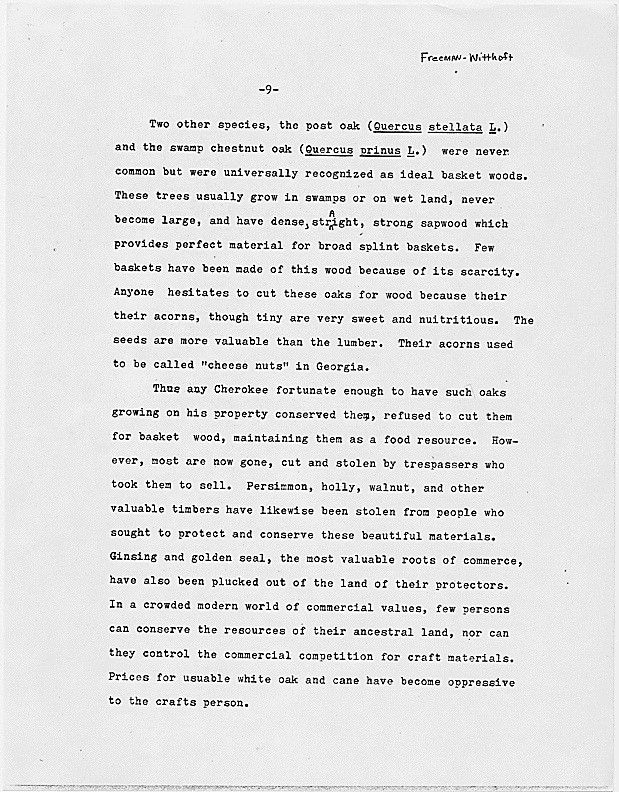
Cherokee Indian Crafts Women and the Economy of Basketry
Page 10

Document
Letter to President Franklin D. Roosevelt from Miss Frances M. Kubicki Regarding the Employment of Married Women
12/20/1933
Additional details from our exhibits and publications
This letter typifies several hundred letters sent to the National Recovery Administration that complain about the employment of married women whose husbands are also employed. Writers, like Miss Kubicki, used adjectives such as "greedy" to describe married women who "cheat" their single sisters and drain the lean job market. Miss Kubicki is typical of working women of her time because single women (divorced and widowed) were 71 percent of the female labor force, although women were only 21 percent of the total labor force in 1930. Although Miss Kubicki wrote to President Roosevelt, her letter was referred to the correspondence branch of the NRA for reply. That reply was sympathetic, but not altogether reassuring. it urged her to write members of Congress and suggested that increased public criticism on the subject of working/married women might result in "some action" in the current session of Congress; yet it informed her firmly "...the authority vested int his administration by the National Industrial Recovery Act does not permit us to intervene in matters of this type and the government cannot say just whom a certain firm shall or shall not employ." While uncertain about Miss Kubicki's employment future, we do know that, as a federal policy, the government never ruled against hiring married women, although some state regulations and popular sentiment were generally opposed to married women working at that time.
This primary source comes from the Records of the National Recovery Administration.
National Archives Identifier: 5757442
Full Citation: Letter to President Franklin D. Roosevelt from Miss Frances M. Kubicki Regarding the Employment of Married Women; 12/20/1933; Records of the National Recovery Administration, . [Online Version, https://www.docsteach.org/documents/document/letter-to-president-franklin-d-roosevelt-from-miss-frances-m-kubicki-regarding-the-employment-of-married-women, April 18, 2024]Letter to President Franklin D. Roosevelt from Miss Frances M. Kubicki Regarding the Employment of Married Women
Page 1
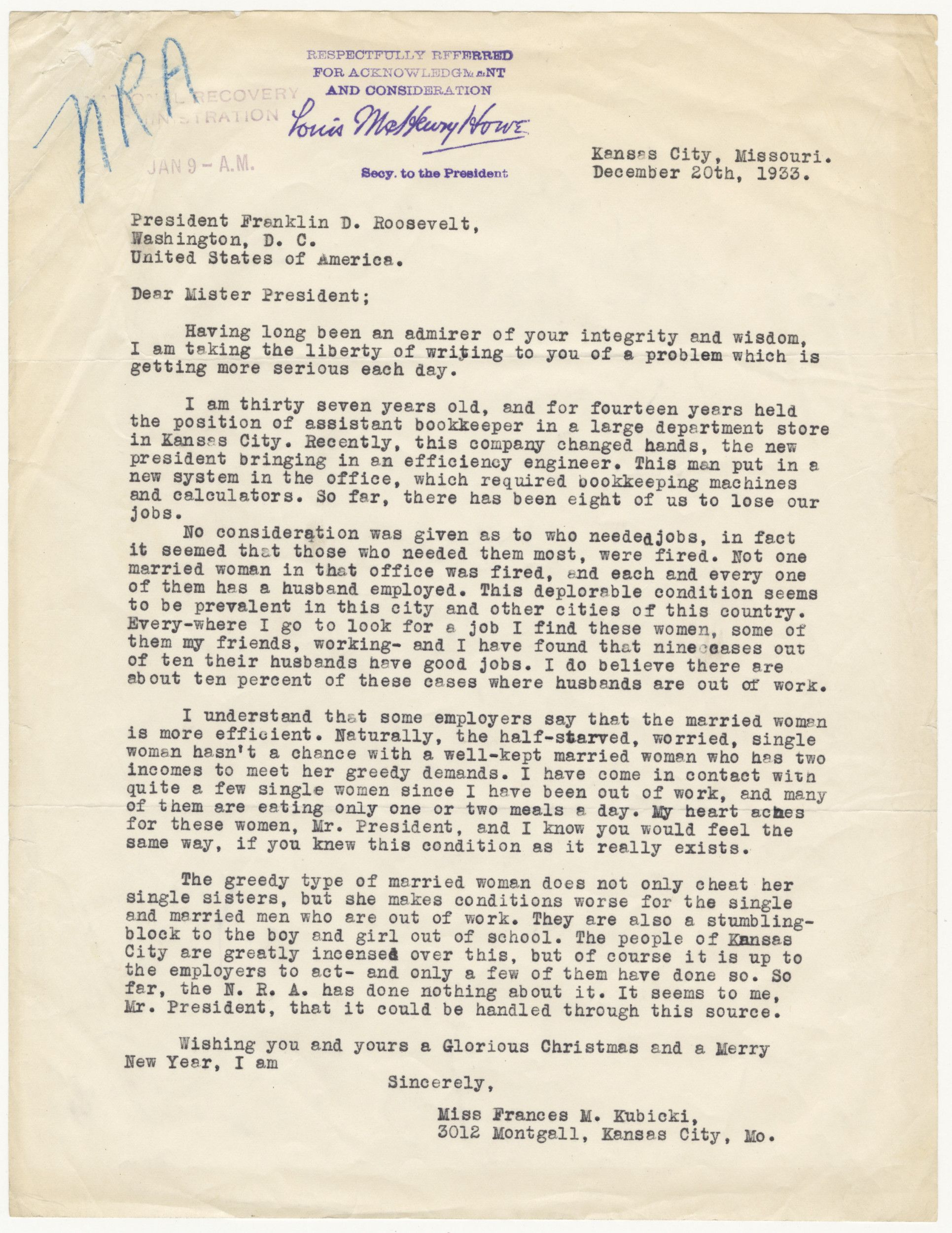
Document
What Some of the Most Successful Women are Wearing This Year
1990
Additional details from our exhibits and publications
This 1990 U.S. Army recruiting poster was part of the successful “Army, Be all you can be” marketing campaign. The young woman is wearing an aviation flight helmet.
This primary source comes from the Records of the U.S. Army Training and Doctrine Command.
National Archives Identifier: 593691
Full Citation: What Some of the Most Successful Women are Wearing This Year; 1990; Records of the U.S. Army Training and Doctrine Command, . [Online Version, https://www.docsteach.org/documents/document/what-some-of-the-most-successful-women-are-wearing-this-year, April 18, 2024]What Some of the Most Successful Women are Wearing This Year
Page 1
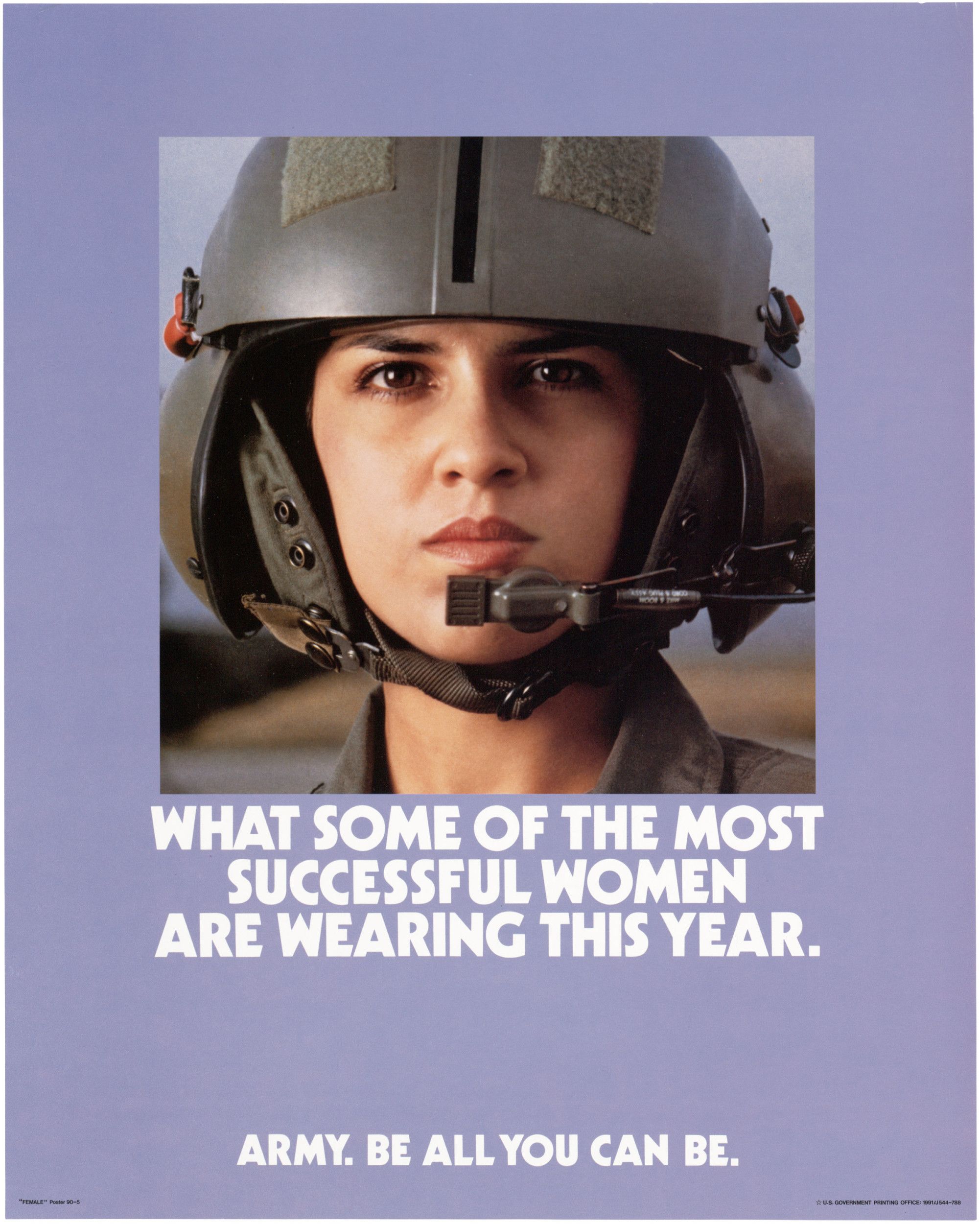
Document
Petition from the Iowa Federation of Women's Clubs in Favor of Child Labor Reform
12/21/1907
This primary source comes from the Records of the U.S. Senate.
National Archives Identifier: 5682559
Full Citation: Petition from the Iowa Federation of Women's Clubs in Favor of Child Labor Reform; 12/21/1907; (Sen 60A-J32); Petitions and Memorials, 1870 - 1946; Records of the U.S. Senate, ; National Archives Building, Washington, DC. [Online Version, https://www.docsteach.org/documents/document/petition-iowa-child-labor, April 18, 2024]Petition from the Iowa Federation of Women's Clubs in Favor of Child Labor Reform
Page 1
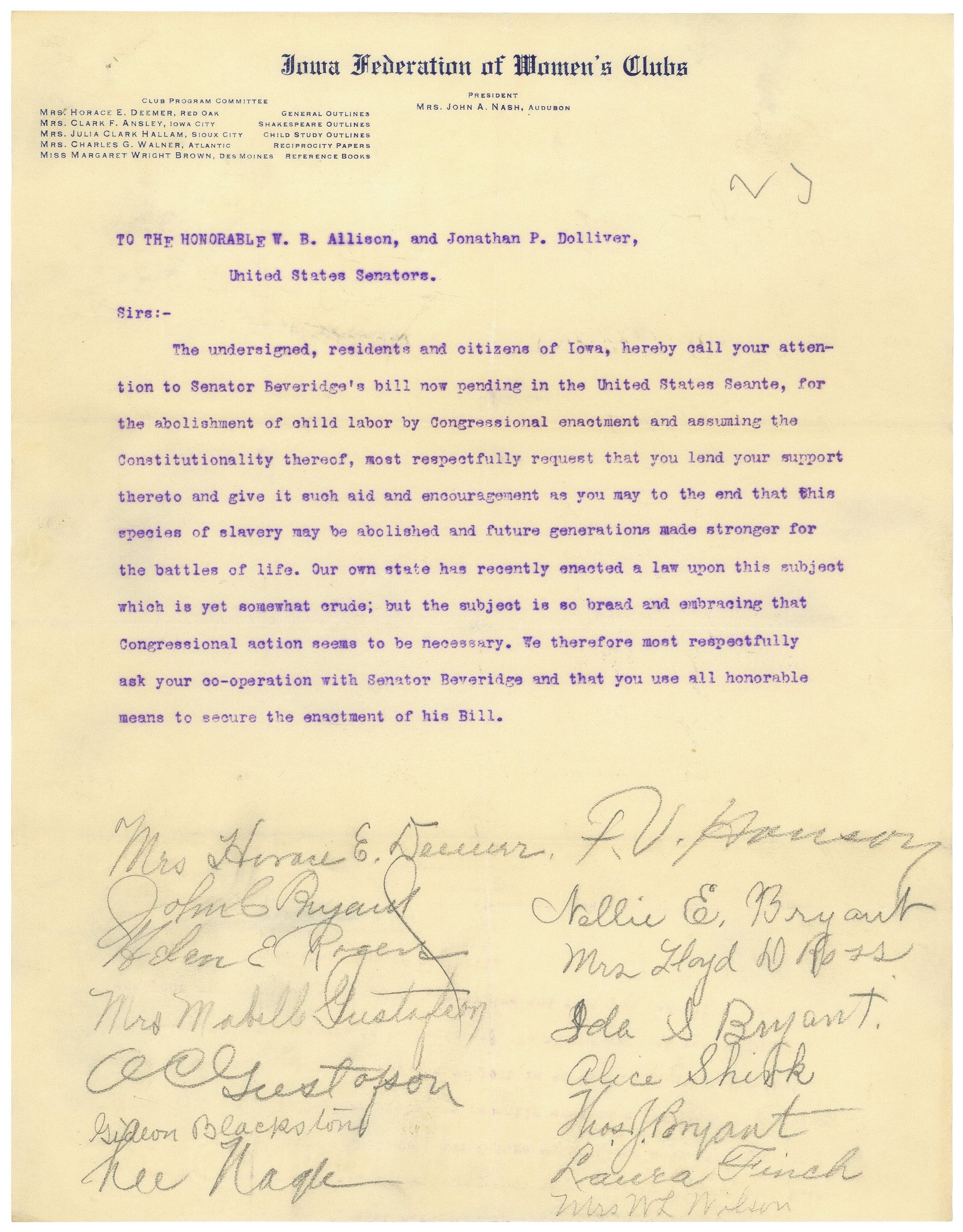
Document
The Lady and the Tiger
11/7/1917
This cartoon depicts the two big winners on Election Day, 1917, in New York. Voters adopted a woman suffrage amendment to the state constitution, a measure backed by Tammany Hall, New York City's Democratic political machine. On the same day, Democrat John F. Hylan defeated both the Republican Mayor of New York City, John Purroy Mitchel, and Socialist candidate Morris Hillquit. The victory was a major triumph for Tammany Hall, here represented by the proud Tammany Tiger. While some states allowed women to vote, no national law guaranteed women that right until the 19th Amendment to the Constitution was ratified in 1920.
This primary source comes from the Records of the U.S. Senate.
National Archives Identifier: 1696624
Full Citation: The Lady and the Tiger; 11/7/1917; Records of the U.S. Senate, . [Online Version, https://www.docsteach.org/documents/document/lady-and-tiger, April 18, 2024]The Lady and the Tiger
Page 1
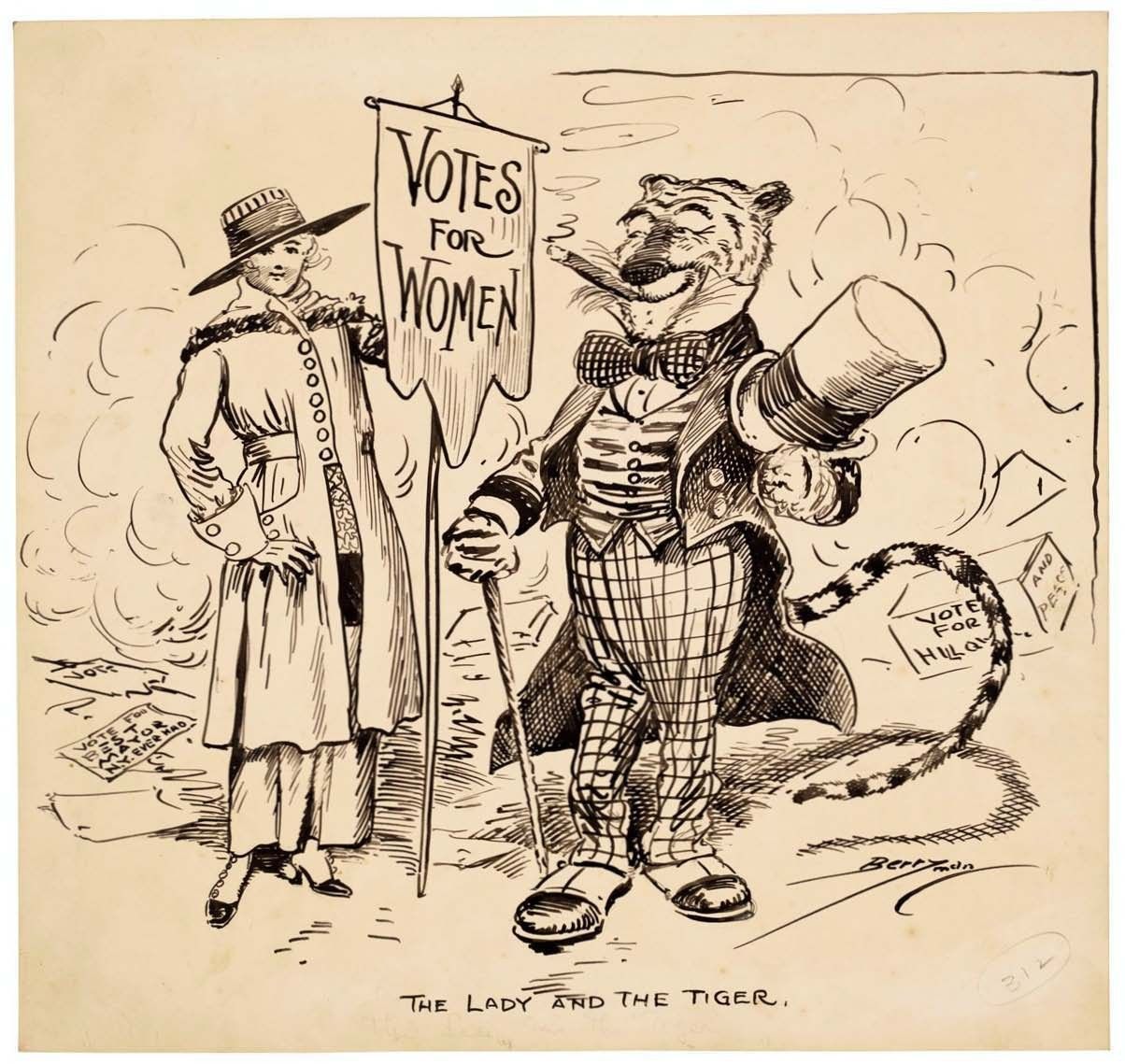
Document
Sandra Day O'Connor Being Sworn in as Supreme Court Justice by Chief Justice Warren Burger, Her Husband John O'Connor Looks On
9/25/1981
Sandra Day O’Connor, the first woman to be appointed to the U.S. Supreme Court, was sworn in on September 25, 1981. Chief Justice Warren Burger administered the oath as Justice O’Connor’s husband, John, looked on. She served 24 years on the Supreme Court before her retirement in 2006.
O’Connor’s influence on the court was immense, as she often acted as a swing vote on key decisions. Some of the notable cases that O’Connor worked on include Bush v. Gore (2000), which confirmed George W. Bush as President, and Planned Parenthood v. Casey (1992), which helped uphold the Roe v. Wade (1973) decision that legalized abortion. And she was the deciding vote on a number of anti-discrimination and civil rights related cases.
Her time on the court also showcased her resilience, as she fought breast cancer. After being diagnosed, there was speculation that she would retire from the court, but O’Connor continued her service. Even though she needed surgery and received chemotherapy, she did not miss any oral arguments and continued her duties as a Justice.
O’Connor was the lone female Supreme Court Justice for most of her tenure, until Justice Ginsburg joined her in 1993. However, O’Connor did not want her gender to be a confining factor of her identity as a strong and effective Justice. “The power I exert on the court depends on the power of my arguments, not on my gender,” Sandra Day O’Connor famously said.
O’Connor’s influence on the court was immense, as she often acted as a swing vote on key decisions. Some of the notable cases that O’Connor worked on include Bush v. Gore (2000), which confirmed George W. Bush as President, and Planned Parenthood v. Casey (1992), which helped uphold the Roe v. Wade (1973) decision that legalized abortion. And she was the deciding vote on a number of anti-discrimination and civil rights related cases.
Her time on the court also showcased her resilience, as she fought breast cancer. After being diagnosed, there was speculation that she would retire from the court, but O’Connor continued her service. Even though she needed surgery and received chemotherapy, she did not miss any oral arguments and continued her duties as a Justice.
O’Connor was the lone female Supreme Court Justice for most of her tenure, until Justice Ginsburg joined her in 1993. However, O’Connor did not want her gender to be a confining factor of her identity as a strong and effective Justice. “The power I exert on the court depends on the power of my arguments, not on my gender,” Sandra Day O’Connor famously said.
This primary source comes from the Collection RR-WHPO: White House Photographic Collection.
National Archives Identifier: 276563289
Full Citation: C4121-11a; Sandra Day O'Connor Being Sworn in as Supreme Court Justice by Chief Justice Warren Burger, Her Husband John O'Connor Looks On; 9/25/1981; Reagan White House Photographs, 1/20/1981 - 1/20/1989; Collection RR-WHPO: White House Photographic Collection, ; Ronald Reagan Library, Simi Valley, CA. [Online Version, https://www.docsteach.org/documents/document/oconnor-sworn-in, April 18, 2024]Sandra Day O'Connor Being Sworn in as Supreme Court Justice by Chief Justice Warren Burger, Her Husband John O'Connor Looks On
Page 1
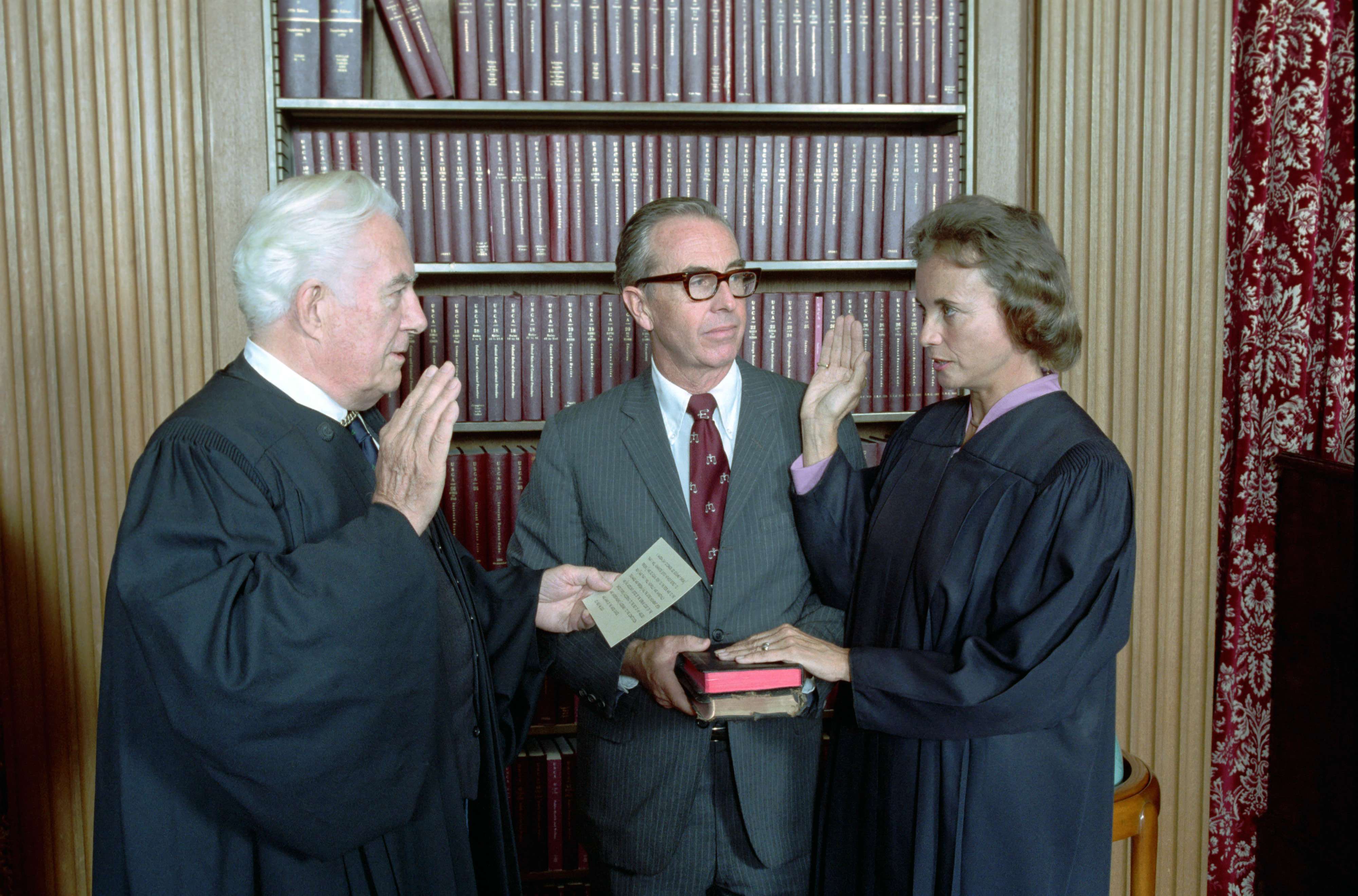
Document
Certificate from the State of Wisconsin Ratifying the 19th Amendment to the Constitution
6/10/1919
Wisconsin was the first state to ratify the 19th Amendment to the Constitution, which granted women the right to vote, on June 10, 1919. This amendment was first introduced into Congress in 1878. On May 21, 1919, the House of Representatives passed the amendment, and two weeks later, the Senate followed. When Tennessee became the 36th state to ratify the amendment on August 18, 1920, the amendment finally obtained the required agreement of three-fourths of the states. U.S. Secretary of State Bainbridge Colby certified the ratification on August 26, 1920.
This primary source comes from the Records of the U.S. House of Representatives.
National Archives Identifier: 1633882
Full Citation: Certificate from the State of Wisconsin Ratifying the 19th Amendment to the Constitution; 6/10/1919; Petitions and Memorials of the House Committee on Woman Suffrage from the 66th Congress; (HR 66A-H22); Committee Papers, 1919 - 1920; Records of the U.S. House of Representatives, ; National Archives Building, Washington, DC. [Online Version, https://www.docsteach.org/documents/document/wi-ratification-19th-amendment, April 18, 2024]Certificate from the State of Wisconsin Ratifying the 19th Amendment to the Constitution
Page 1
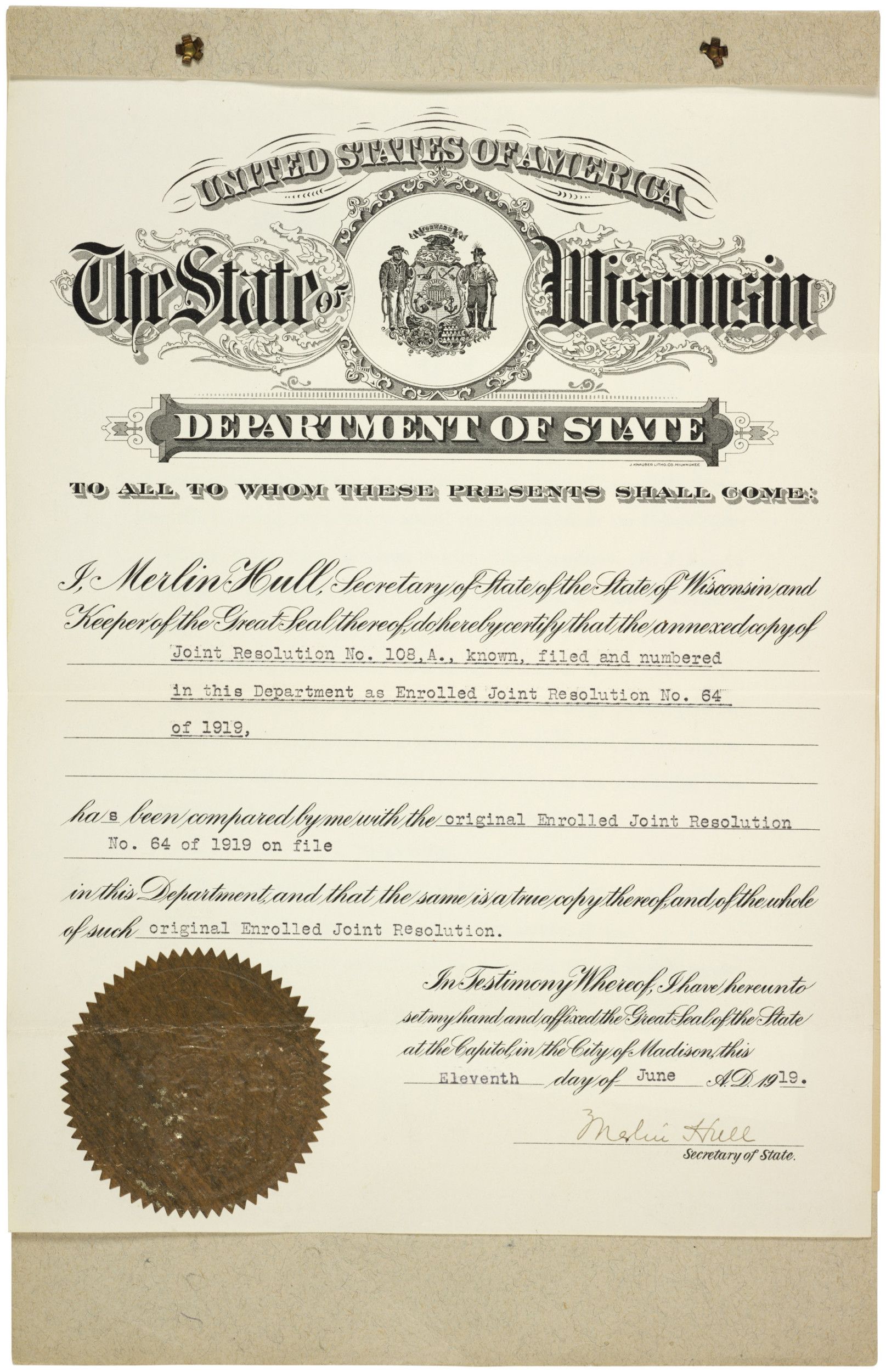
Certificate from the State of Wisconsin Ratifying the 19th Amendment to the Constitution
Page 2
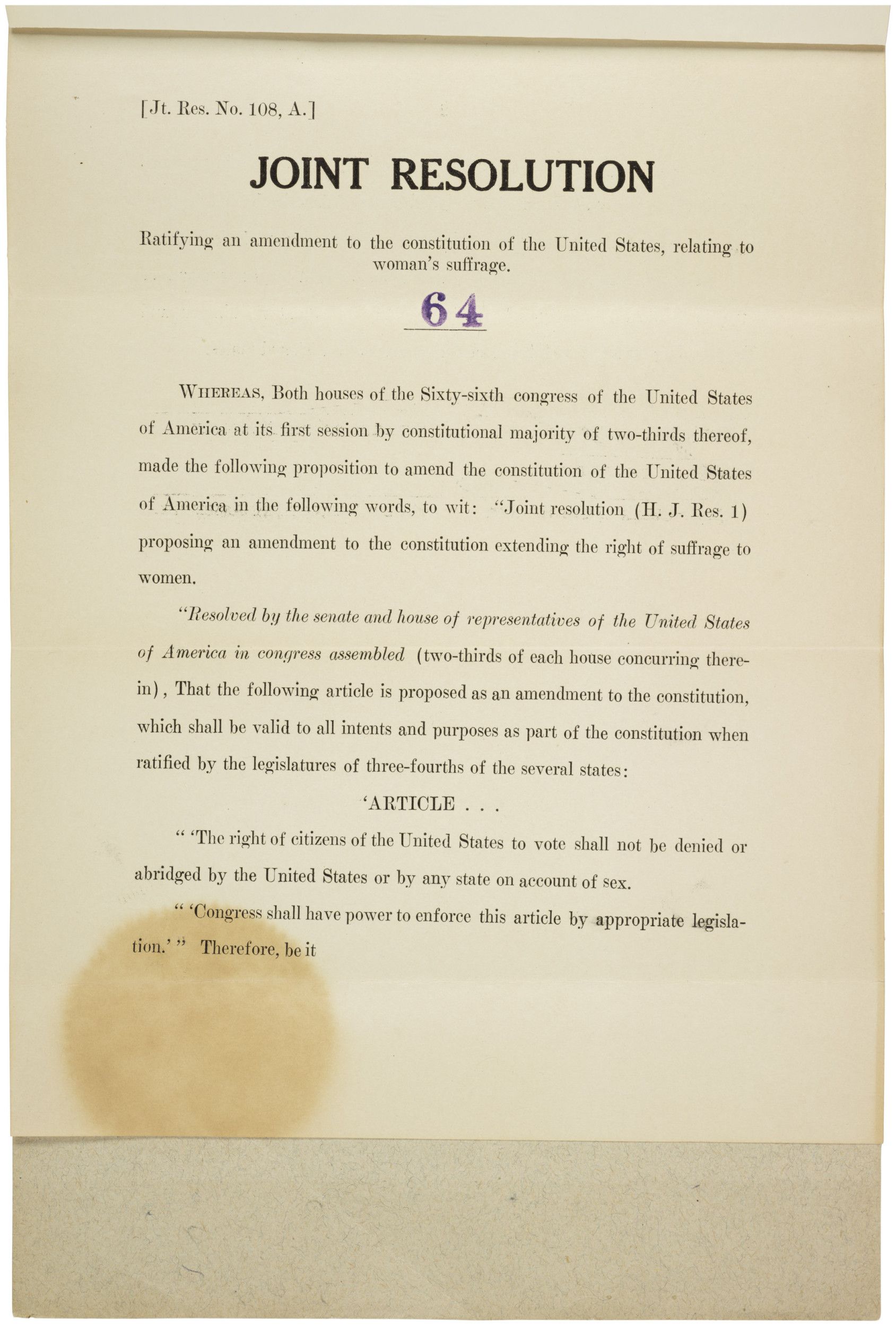
Certificate from the State of Wisconsin Ratifying the 19th Amendment to the Constitution
Page 3

Certificate from the State of Wisconsin Ratifying the 19th Amendment to the Constitution
Page 4
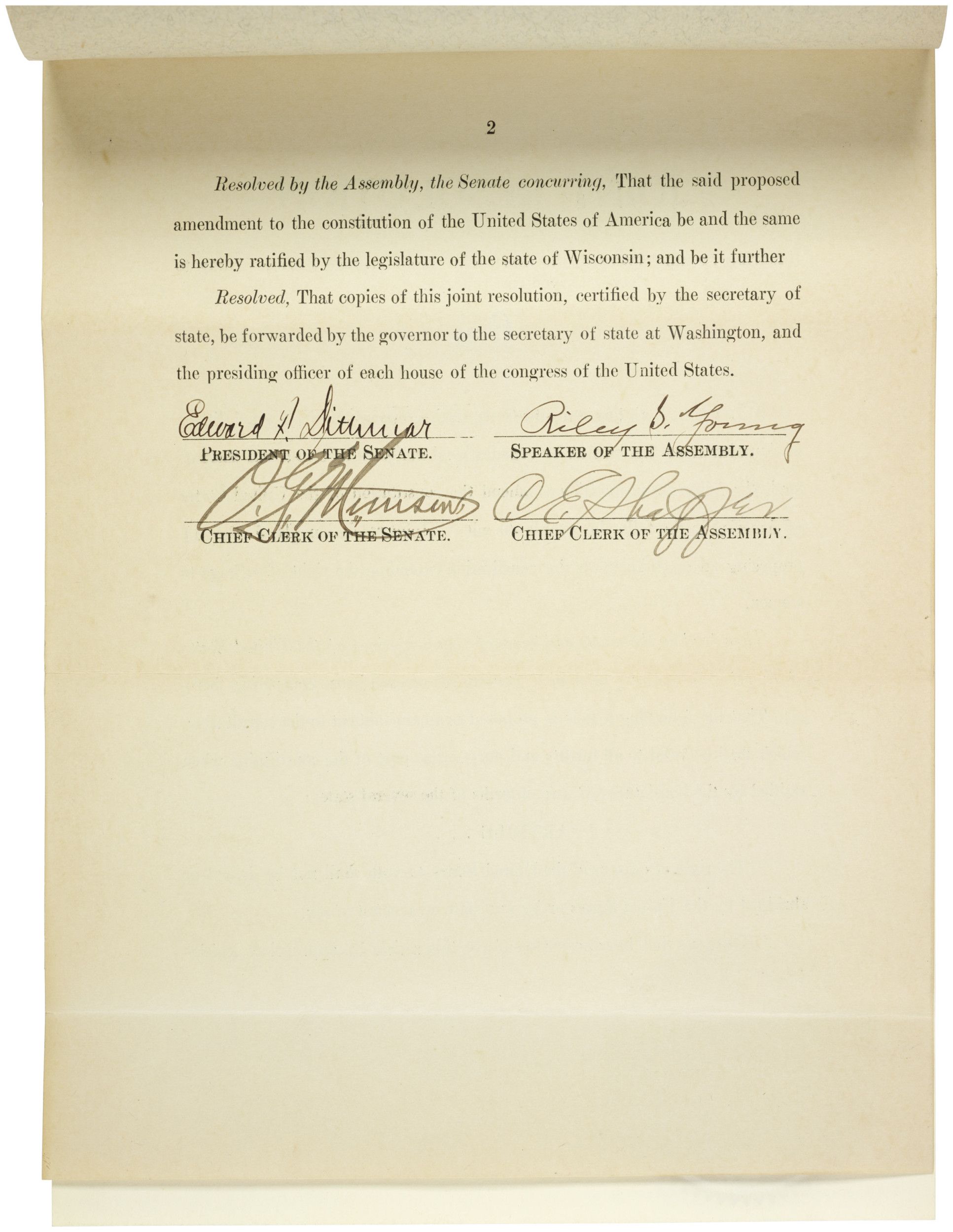
Document
Women shipfitters worked on board the USS NEREUS, and are shown as they neared completion of the floor in a part of the engine room.
ca. 1943
The original caption for this photograph reads: Women shipfitters worked on board the USS Nereus, and are shown as they neared completion of the floor in a part of the engine room. Left to right are Shipfitters Betty Pierce, Lola Thomas, Margaret Houston, Thelma Mort, and Katie Stanfill. US Navy Yard, Mare Island, CA.
This primary source comes from the Records of Naval Districts and Shore Establishments.
National Archives Identifier: 296892
Full Citation: Photograph 181-MINSYHISTSUBJ-WOMEN1917(1951)-WOM8; Women shipfitters worked on board the USS NEREUS, and are shown as they neared completion of the floor in a part of the engine room.; ca. 1943; Women Workers 1917-1951; Records of Naval Districts and Shore Establishments, ; National Archives at San Francisco, San Bruno, CA. [Online Version, https://www.docsteach.org/documents/document/women-shipfitters-uss-nereus, April 18, 2024]Women shipfitters worked on board the USS NEREUS, and are shown as they neared completion of the floor in a part of the engine room.
Page 1
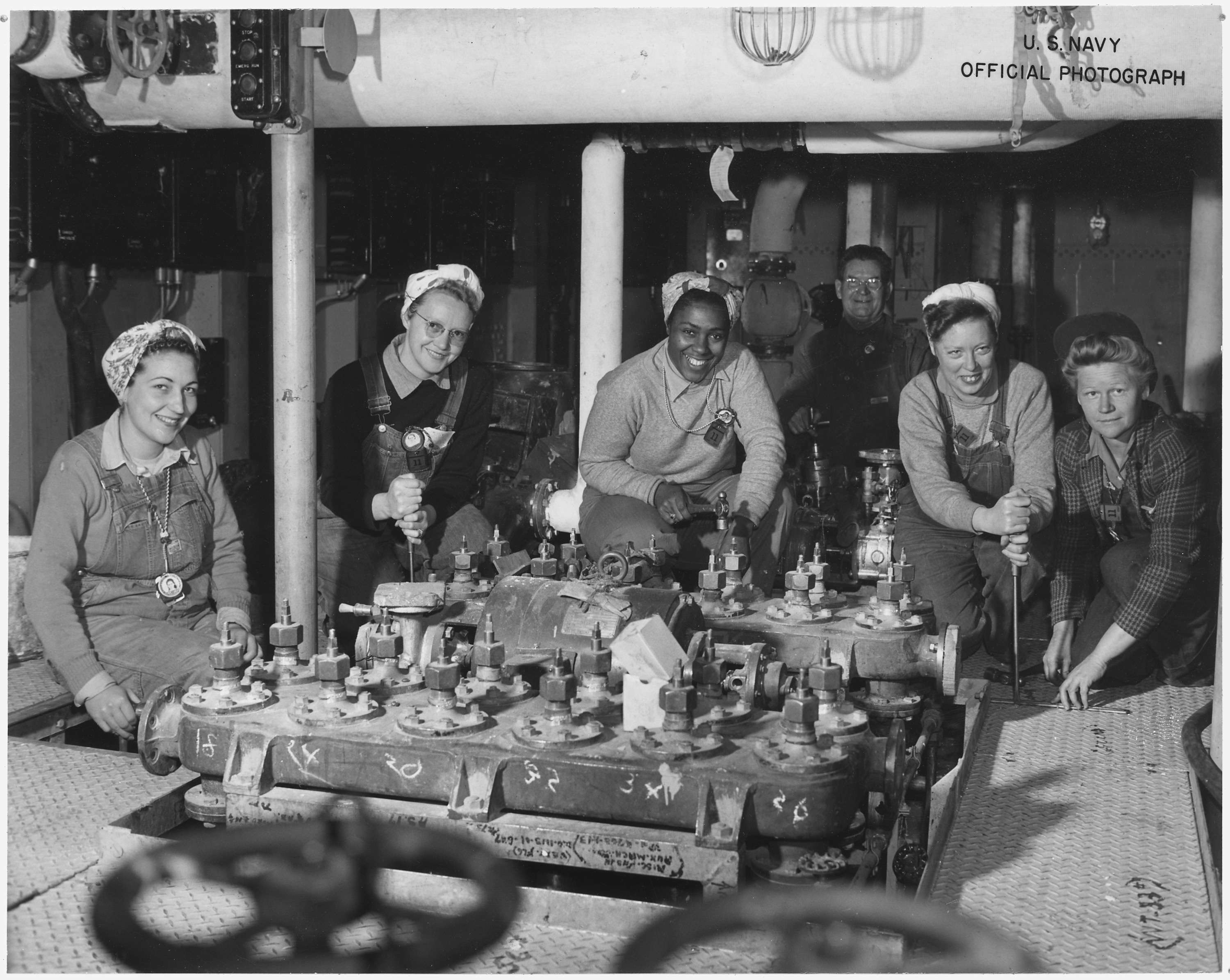
Document
Message of President Franklin Roosevelt nominating Frances Perkins of New York to be Secretary of Labor
3/4/1933
Additional details from our exhibits and publications
President Franklin D. Roosevelt notified the U.S. Senate on March 4, 1933, that he had nominated Frances Perkins of New York to be Secretary of Labor. She was confirmed in this position and became the first woman appointed to a Cabinet position. She was the longest serving Labor secretary, serving for 12 years between 1933 and 1945. She was also the first woman to enter the Presidential Line of Succession.
This primary source comes from the Records of the U.S. Senate.
National Archives Identifier: 595434
Full Citation: Message of President Franklin Roosevelt nominating Frances Perkins of New York to be Secretary of Labor; 3/4/1933; Records of the U.S. Senate, . [Online Version, https://www.docsteach.org/documents/document/message-of-president-franklin-roosevelt-nominating-frances-perkins-of-new-york-to-be-secretary-of-labor, April 18, 2024]Message of President Franklin Roosevelt nominating Frances Perkins of New York to be Secretary of Labor
Page 1

Document
Police Report on Arrest of Rosa Parks
1955
In 1955, a 42-year-old seamstress touched off a 381-day boycott of the Montgomery, Alabama, bus system when she was arrested for failing to yield her seat to a white man. This is the record of Rosa Parks’s arrest. A few days later, she was fined $10 plus $4. for court costs. A 26-year-old unknown minister, Martin Luther King, Jr., emerged as the leader of the Montgomery Bus Boycott.
Text adapted from “The Arrest Records of Rosa Parks” in the May/June 1999 National Council for the Social Studies (NCSS) publication Social Education.
Text adapted from “The Arrest Records of Rosa Parks” in the May/June 1999 National Council for the Social Studies (NCSS) publication Social Education.
This primary source comes from the Records of District Courts of the United States.
National Archives Identifier: 596074
Full Citation: Police Report on Arrest of Rosa Parks; 1955; Aurelia S. Browder et al. v. W. A. Gayle et al., No. 1147; Civil Cases, 9/1938 - 11/26/1968; Records of District Courts of the United States, ; National Archives at Atlanta, Morrow, GA. [Online Version, https://www.docsteach.org/documents/document/police-report-on-arrest-of-rosa-parks, April 18, 2024]Police Report on Arrest of Rosa Parks
Page 1
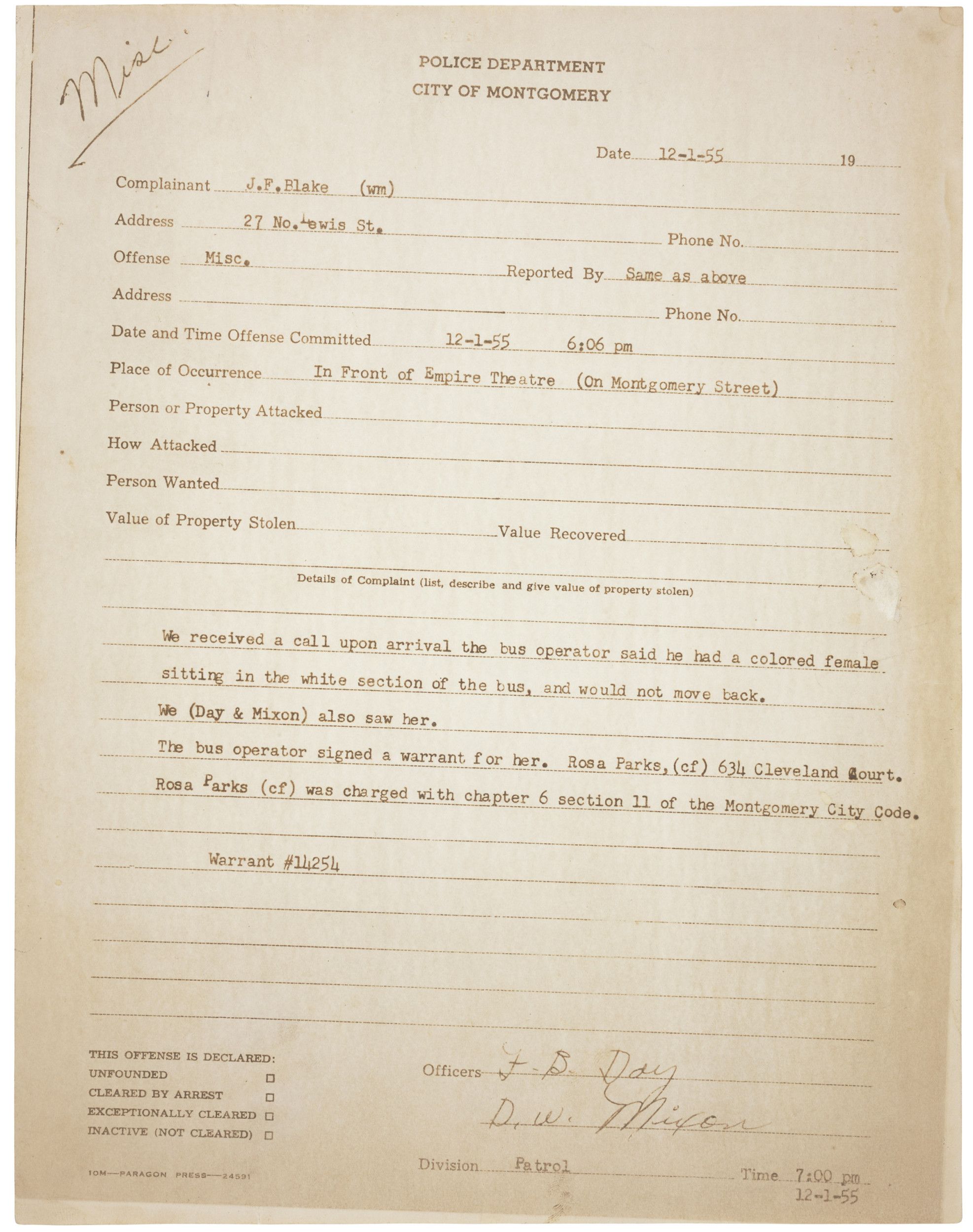
Police Report on Arrest of Rosa Parks
Page 2
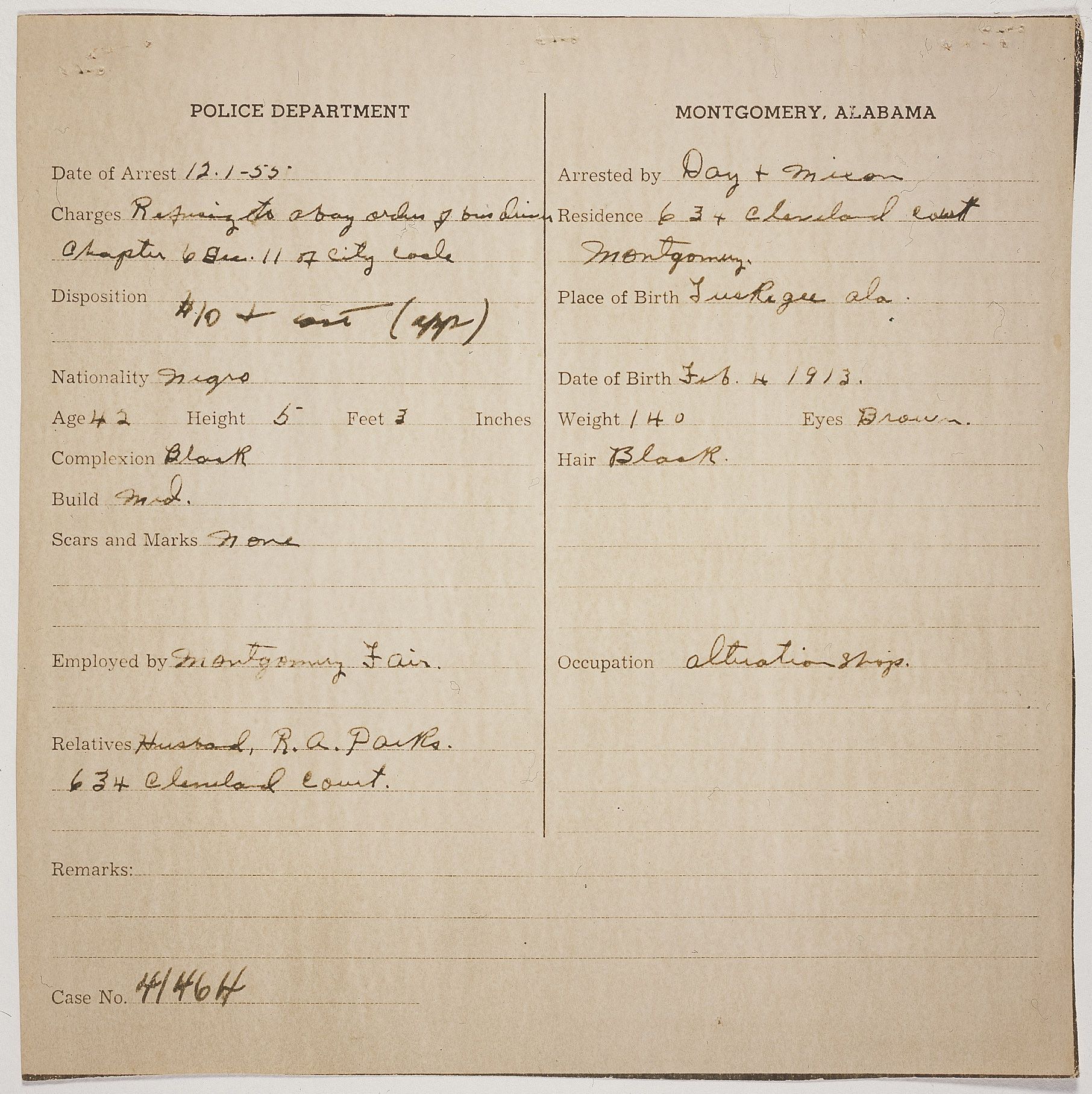
Document
Photograph of Women Working at a Bell System Telephone Switchboard
12/22/1943
This photograph shows a telephone switchboard where overseas phone calls were handled during World War II. Many women patriotically joined the industrial workforce to work in shipyards or an aircraft factories, but many more worked in service or clerical jobs as secretaries, bank tellers, retail clerks, and telephone operators.
This primary source comes from the Records of the Women's Bureau.
National Archives Identifier: 1633445
Full Citation: Photograph 86-WWT-28-3; Photograph of Women Working at a Bell System Telephone Switchboard; 12/22/1943; Women Working In Industry, 1940 - 1945; Records of the Women's Bureau, ; National Archives at College Park, College Park, MD. [Online Version, https://www.docsteach.org/documents/document/bell-telephone-switchboard, April 18, 2024]Photograph of Women Working at a Bell System Telephone Switchboard
Page 1
